Mid-century modern dining rooms never go out of style, and there's a good reason why. Whether you're drawn to classic walnut furniture, bold geometric patterns, or that perfect Sputnik chandelier, this iconic design movement offers something for everyone. From Scandinavian simplicity to industrial edge, warm earth tones to vibrant color pops, we're diving into 20 stunning examples that prove mid-century modern isn't just a trend—it's timeless. Get ready to discover your next design obsession.
1. Classic Mid-Century Modern Walnut Dining Room
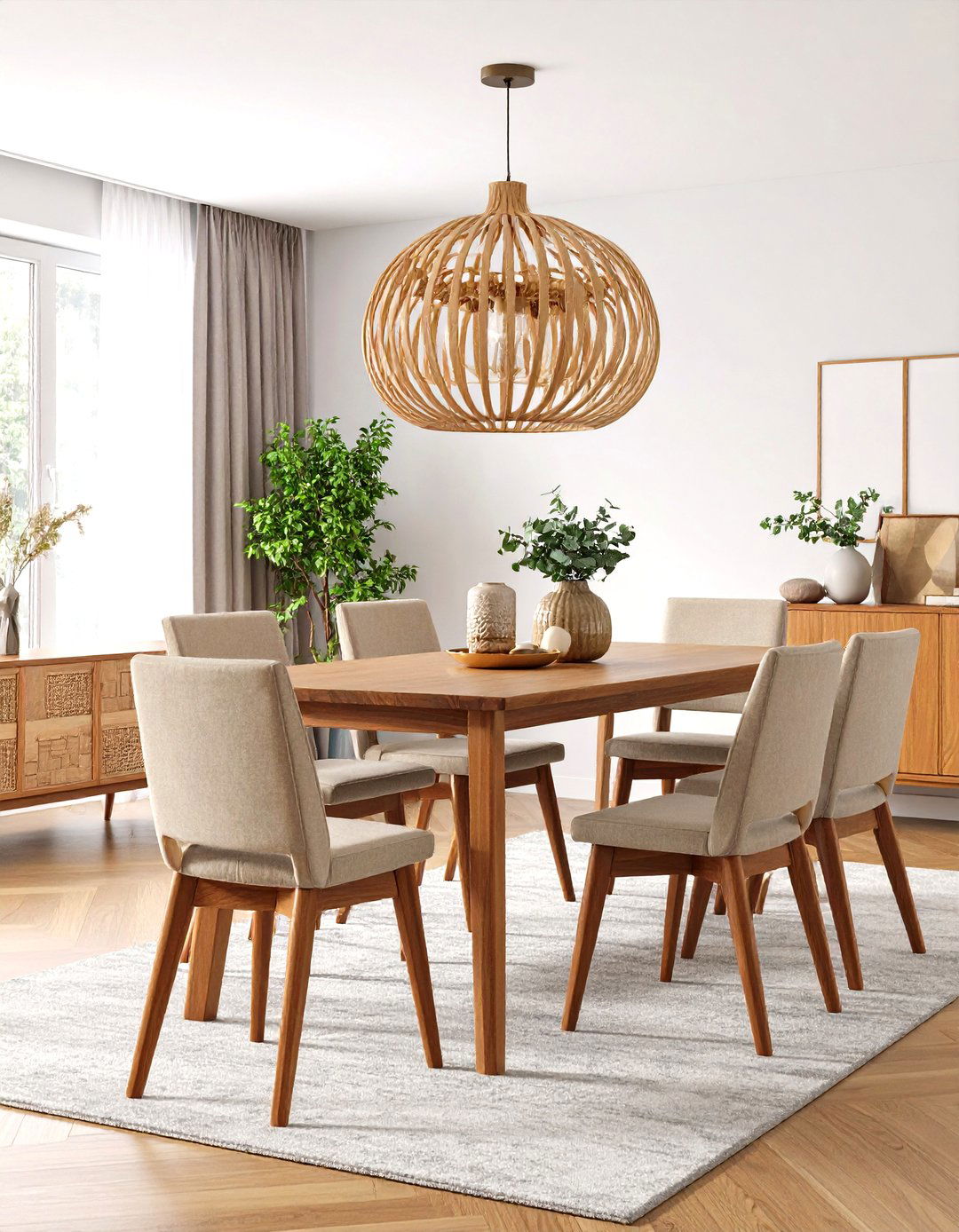
The quintessential mid-century modern dining room centers around rich walnut furniture with clean, geometric lines. This timeless approach features a rectangular walnut dining table with splayed legs, complemented by upholstered chairs in warm leather or fabric. The warm honey tones of walnut wood create an inviting atmosphere, while the furniture's streamlined silhouettes maintain the period's emphasis on functionality. A classic sputnik chandelier in brass or black metal provides ambient lighting, casting dramatic shadows that enhance the wood's natural grain. The color palette remains neutral with creamy whites and soft grays, allowing the walnut's natural beauty to take center stage. Built-in credenzas or floating sideboards offer storage while maintaining the room's uncluttered aesthetic, perfectly embodying the mid-century principle of "less is more."
2. Bold Sputnik Chandelier Mid-Century Modern Dining Room

Dramatic lighting takes center stage in this mid-century modern dining room, where an oversized sputnik chandelier becomes the room's defining feature. The fixture's starburst design with multiple arms extending outward creates a sculptural focal point that embodies the era's fascination with atomic age aesthetics. The surrounding furniture remains deliberately understated, featuring a simple pedestal table and streamlined chairs that allow the chandelier to command attention. Warm brass or matte black finishes on the lighting fixture complement the room's neutral palette of whites and soft grays. The chandelier's multiple bulbs provide excellent task lighting for dining while creating ambient illumination that transforms the space into an intimate gathering place. This approach demonstrates how a single statement piece can define an entire room's character while maintaining the mid-century modern principle of functional beauty.
3. Vibrant Color Pop Mid-Century Modern Dining Room
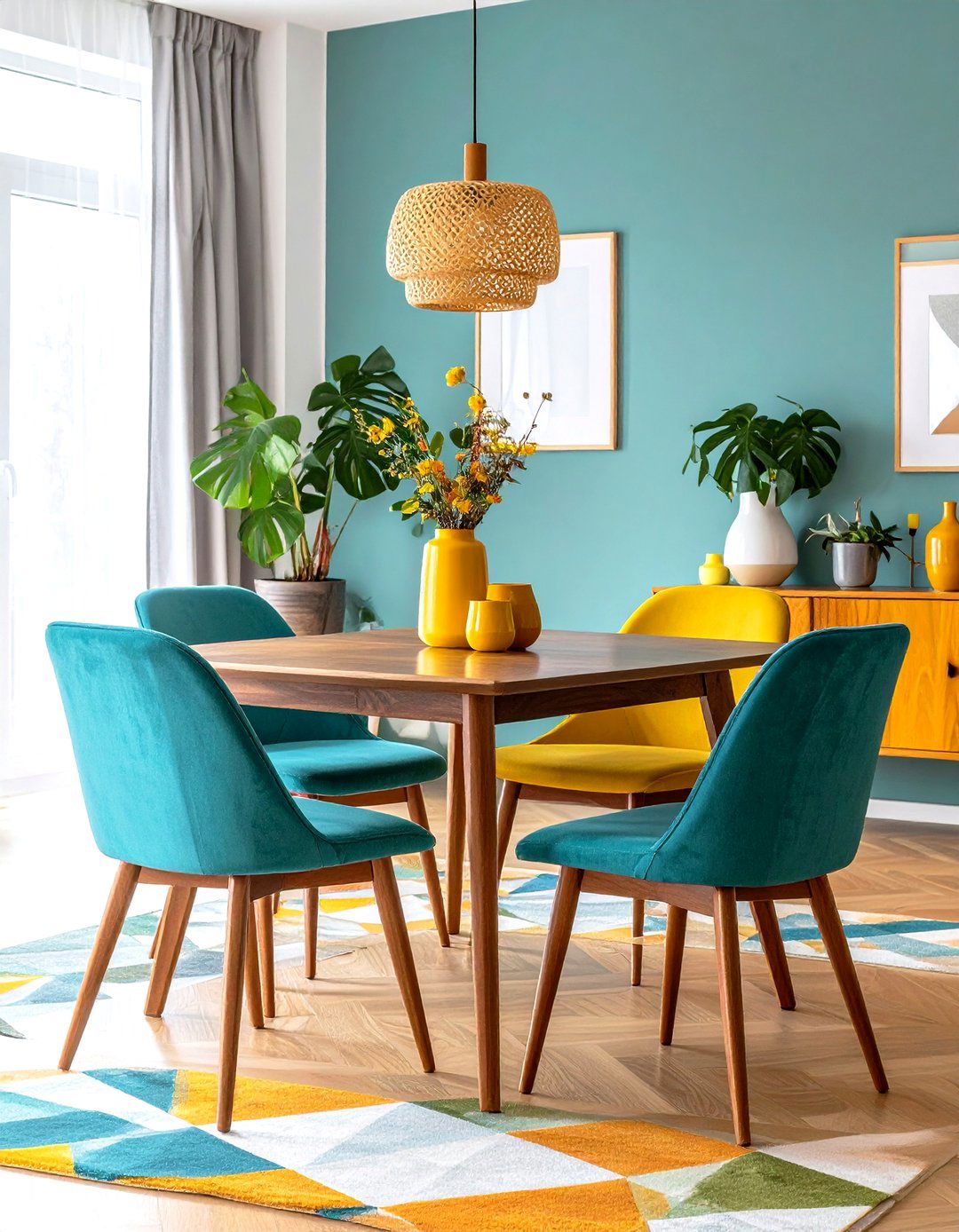
This energetic mid-century modern dining room embraces the period's love for bold, optimistic colors through strategic accent pieces and textiles. Bright teal dining chairs contrast beautifully against a warm walnut table, while mustard yellow and orange accessories add layers of visual interest. The walls remain neutral in crisp white or soft cream, providing a clean backdrop that allows the colorful elements to shine. A geometric area rug in complementary hues anchors the space while adding texture and pattern. The lighting fixture features clean lines in brass or chrome, supporting rather than competing with the room's vibrant color story. Abstract artwork in coordinating colors adds personality without overwhelming the space. This approach captures the mid-century modern spirit of joy and experimentation while maintaining the style's essential balance between boldness and restraint.
4. Scandinavian-Inspired Mid-Century Modern Dining Room
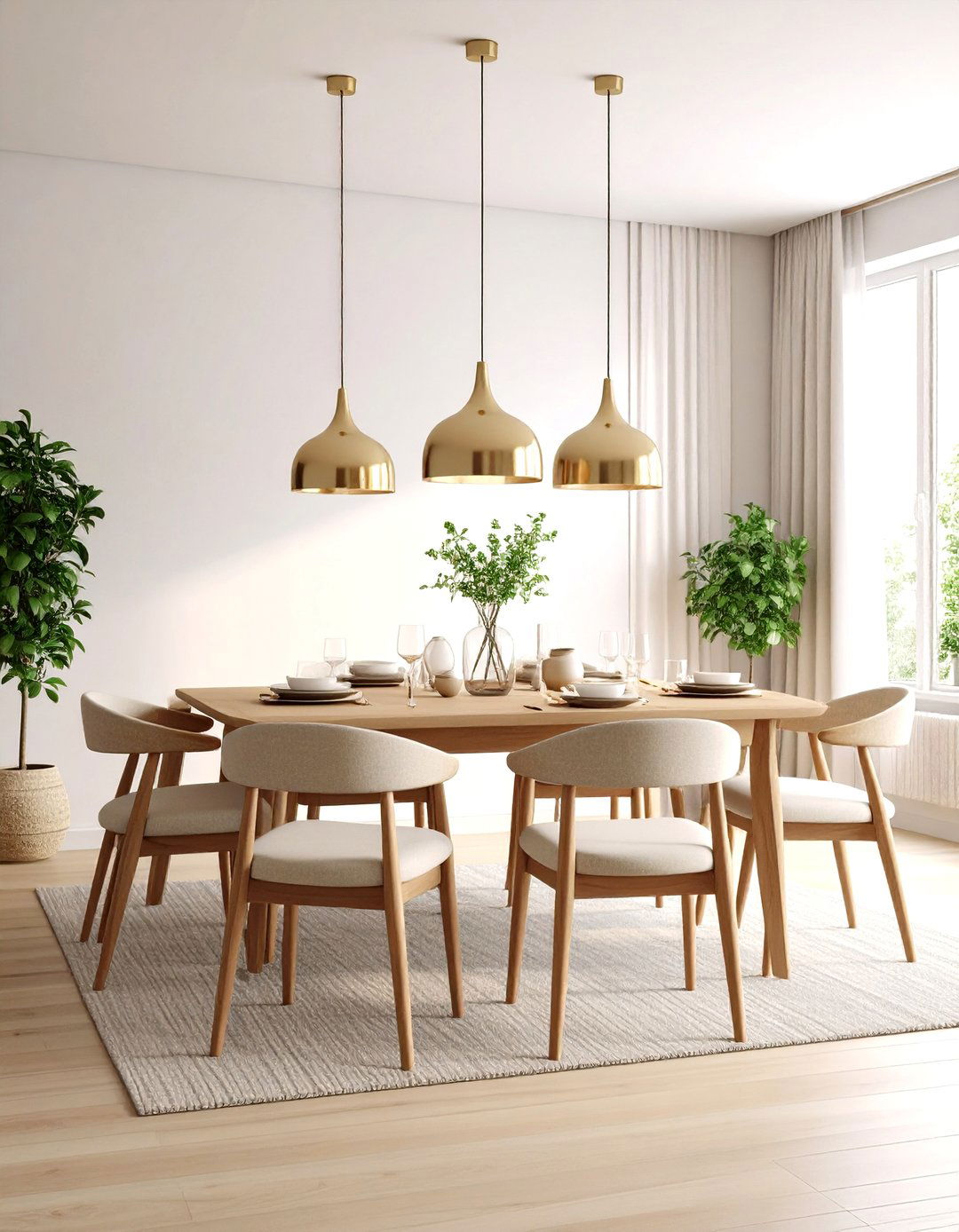
This refined mid-century modern dining room draws inspiration from Scandinavian design principles, emphasizing natural materials, light wood tones, and functional beauty. Light oak or birch furniture creates an airy, sophisticated atmosphere, while maintaining the clean lines characteristic of both movements. The dining table features a simple pedestal base or gently tapered legs, surrounded by chairs with curved backs and natural fiber cushions. A neutral color palette of whites, soft grays, and natural wood tones creates a serene environment that feels both timeless and contemporary. Simple pendant lighting in brass or natural materials provides focused illumination without overwhelming the space's minimalist aesthetic. Textiles in natural fibers like linen and wool add warmth and texture, while a few carefully selected accessories in muted tones complete the look. This approach demonstrates how mid-century modern principles can be adapted to create spaces that feel both historically grounded and effortlessly modern.
5. Industrial Mid-Century Modern Dining Room
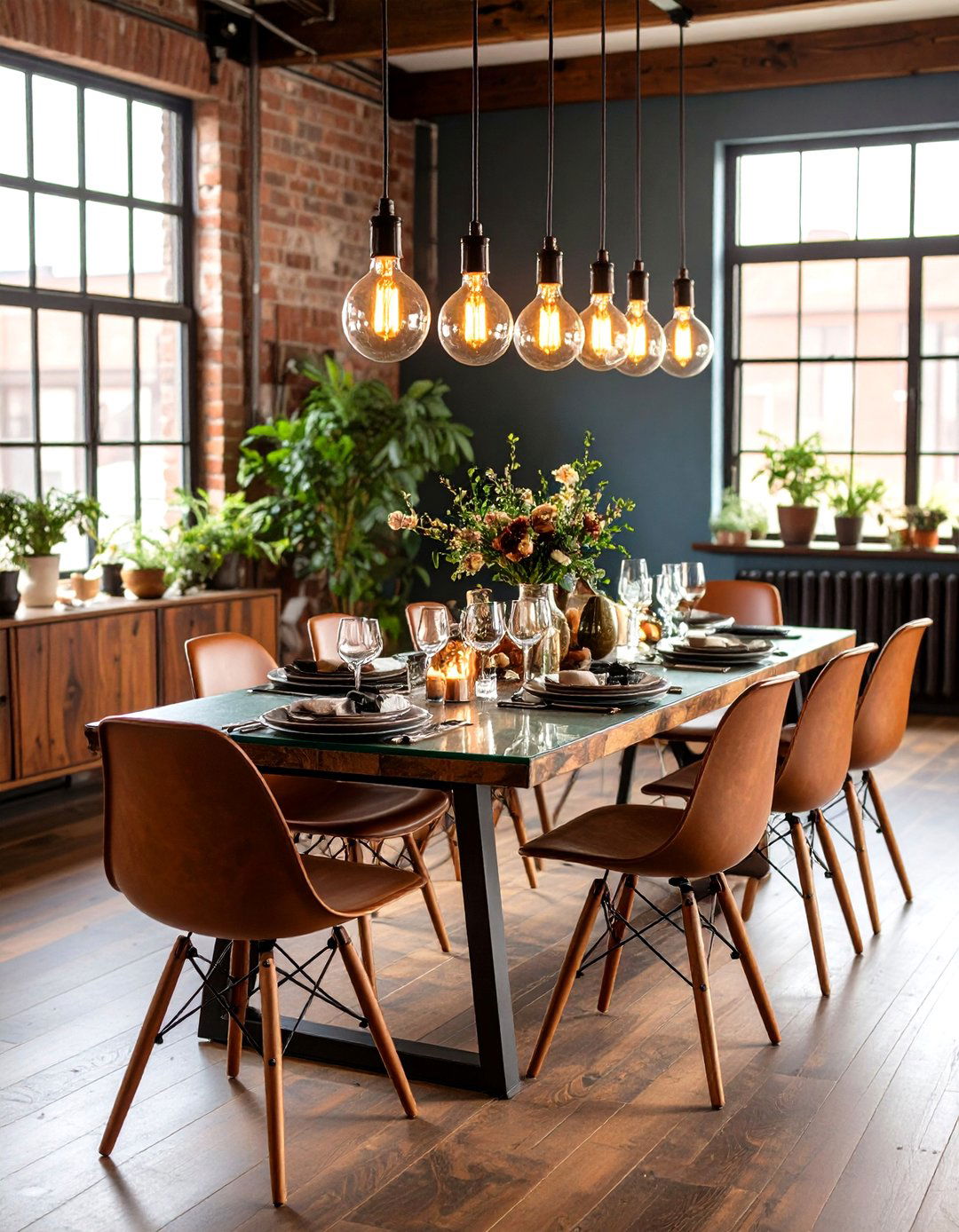
This sophisticated mid-century modern dining room incorporates industrial elements while maintaining the period's signature elegance and functionality. Metal and glass dining tables with hairpin legs or steel frames create visual lightness, while leather dining chairs in rich cognac or black provide comfort and durability. The color palette combines warm metallics with deep neutrals, creating a masculine yet refined atmosphere. Edison bulb chandeliers or sleek metal pendant lights provide ambient lighting while reinforcing the industrial aesthetic. Natural materials like reclaimed wood in credenzas or accent walls add warmth and prevent the space from feeling cold. The overall effect balances the mid-century modern love of innovation with industrial design's honest use of materials. This approach appeals to those who appreciate both the optimism of mid-century design and the straightforward functionality of industrial elements.
6. Organic Curves Mid-Century Modern Dining Room
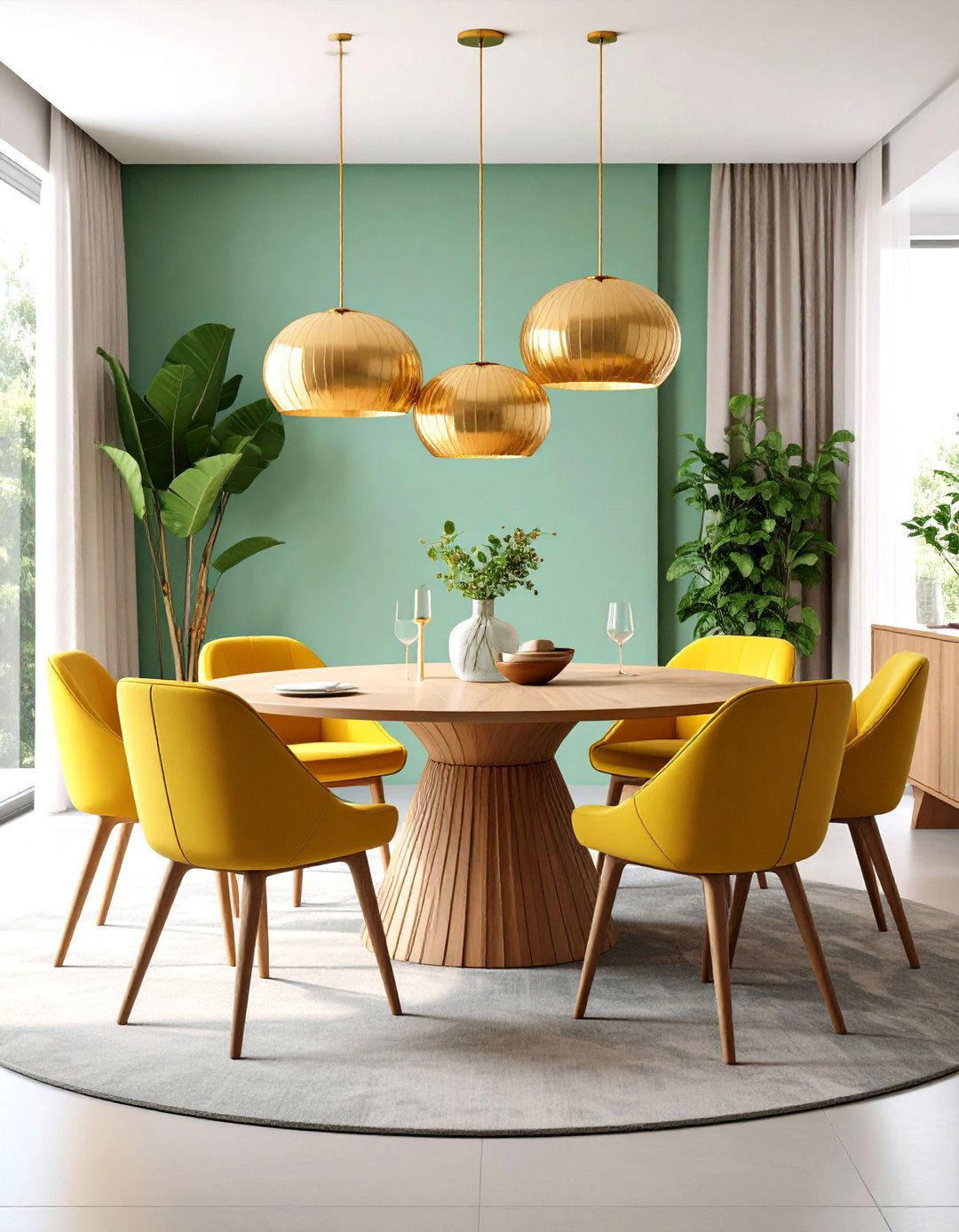
This flowing mid-century modern dining room celebrates the period's fascination with organic forms and natural shapes through curved furniture and soft, undulating lines. A round or oval dining table with a sculptural pedestal base becomes the room's centerpiece, surrounded by chairs with curved backs and flowing silhouettes. The Eames molded plywood chairs or similar organic designs exemplify this approach, combining comfort with artistic expression. Curved built-in banquettes or rounded credenzas continue the theme while providing functional storage and seating. The color palette remains warm and natural, with cream, soft brown, and muted green tones that echo nature's palette. Lighting fixtures with globe or organic-shaped shades complement the room's curvilinear theme. This design philosophy reflects the mid-century modern belief that furniture should be both beautiful and comfortable, creating spaces that feel both sophisticated and naturally welcoming.
7. Geometric Pattern Mid-Century Modern Dining Room

This dynamic mid-century modern dining room showcases the period's love for geometric patterns through carefully coordinated textiles, artwork, and architectural elements. Bold geometric wallpaper or fabric panels create visual interest while maintaining the clean lines essential to the style. The dining furniture features simple, rectangular or circular forms that provide a calm counterpoint to the room's patterned elements. Chair upholstery in coordinating geometric prints adds personality without overwhelming the space. A simple pendant light or chandelier with geometric forms reinforces the pattern theme while providing necessary illumination. The color palette typically includes two or three coordinating colors, such as teal and orange or mustard and navy, applied in measured doses throughout the space. This approach demonstrates how mid-century modern design can incorporate pattern and visual interest while maintaining the style's essential balance and sophistication.
8. Warm Earth Tones Mid-Century Modern Dining Room
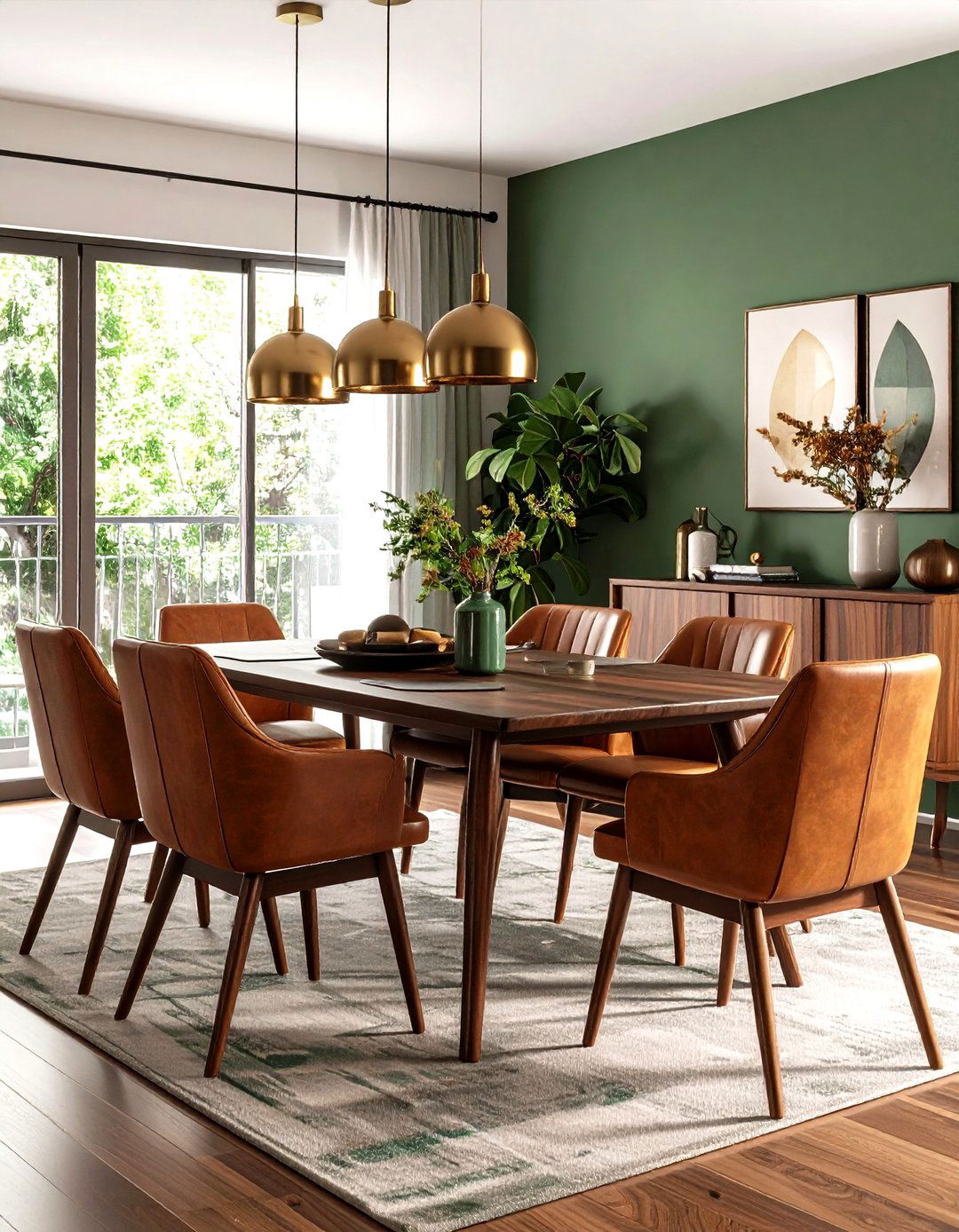
This inviting mid-century modern dining room embraces the period's connection to nature through a rich palette of warm earth tones. Ochre, rust, deep brown, and forest green create a sophisticated color story that feels both grounded and luxurious. The dining table in dark walnut or teak provides a sturdy foundation, while upholstered chairs in rust-colored leather or deep green fabric add comfort and visual richness. Brass or copper lighting fixtures warm the space with their metallic glow, while natural fiber rugs and wooden accessories reinforce the earthy theme. The walls might feature warm paint colors or natural wood paneling that complements the furniture's rich tones. This approach captures the mid-century modern spirit of optimism and connection to nature while creating spaces that feel both timeless and thoroughly comfortable. The result is a dining room that invites lingering conversation and creates a sense of warmth and welcome.
9. Minimalist Clean Lines Mid-Century Modern Dining Room
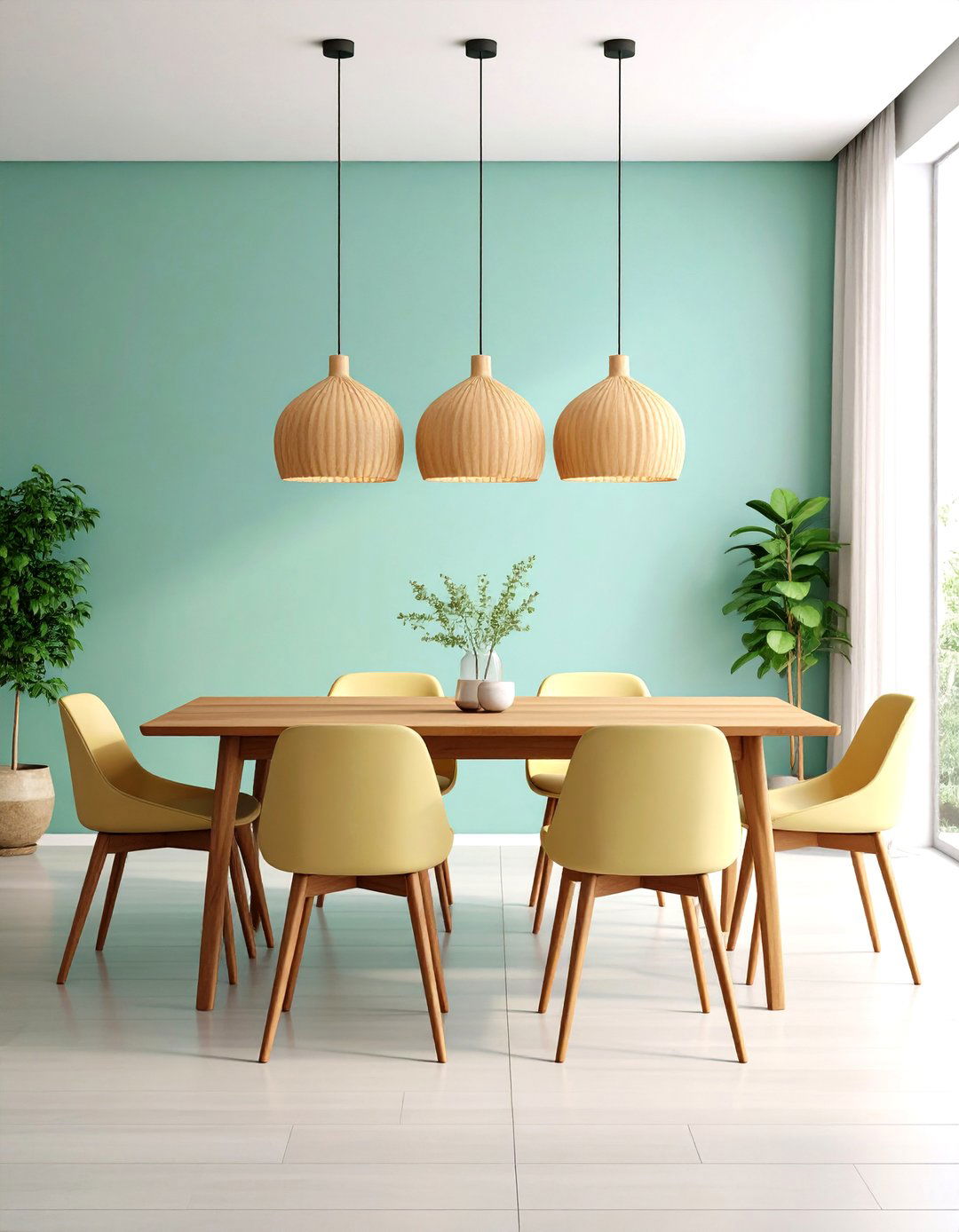
This serene mid-century modern dining room distills the style to its purest elements, emphasizing clean lines, open space, and functional beauty. A simple rectangular dining table with hairpin legs or a sleek pedestal base anchors the space, surrounded by chairs with minimal ornamentation and perfect proportions. The color palette remains strictly neutral, with white, cream, and light gray creating a calm, uncluttered atmosphere. A single pendant light or simple chandelier provides illumination without adding visual complexity. Storage solutions are built-in or carefully concealed, maintaining the room's clean aesthetic. Artwork, if present, features simple geometric forms or abstract compositions that complement rather than compete with the furniture. This approach demonstrates how mid-century modern design can create spaces that feel both sophisticated and peaceful, proving that simplicity can be profoundly elegant when executed with careful attention to proportion and detail.
10. Mixed Materials Mid-Century Modern Dining Room
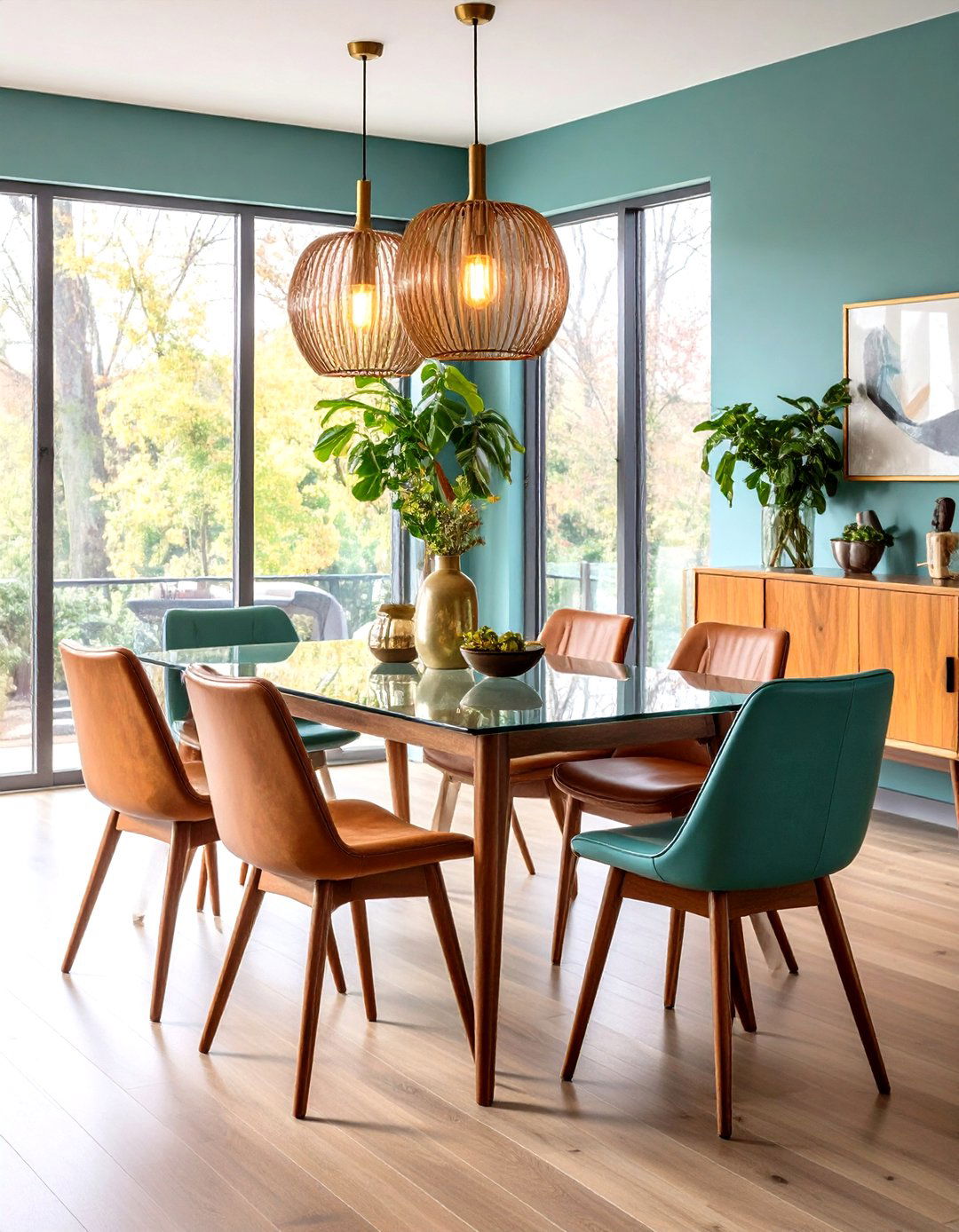
This sophisticated mid-century modern dining room showcases the period's innovative use of diverse materials, combining wood, metal, glass, and textiles in harmonious compositions. A glass-top dining table with a wooden or metal base creates visual lightness while maintaining functionality. Different chair materials—perhaps wood, leather, and metal—are carefully coordinated to create visual interest without chaos. The lighting fixture might combine brass and wood or feature mixed metals that complement the room's diverse material palette. Natural stone or tile flooring adds texture and durability, while fabric elements in curtains or upholstery introduce softness and warmth. The color palette typically remains neutral to allow the various materials to shine, with perhaps one or two accent colors tying the elements together. This approach demonstrates the mid-century modern belief that different materials can work together harmoniously when unified by good design principles.
11. Open Concept Integration Mid-Century Modern Dining Room

This flowing mid-century modern dining room seamlessly integrates with adjacent living spaces, embodying the period's revolutionary approach to interior architecture. The dining area is defined by furniture placement and area rugs rather than walls, creating a sense of spaciousness and connection. A round or oval dining table encourages conversation and social interaction, while lightweight chairs can be easily moved to accommodate different activities. The color palette and materials coordinate with the surrounding living spaces, creating visual continuity throughout the open floor plan. Lighting fixtures are carefully positioned to define the dining area while complementing the overall space's illumination scheme. Built-in storage solutions and floating credenzas maintain the open feeling while providing necessary functionality. This approach reflects the mid-century modern emphasis on casual living and social interaction, creating spaces that adapt to modern lifestyles while maintaining period authenticity.
12. Retro Color Blocking Mid-Century Modern Dining Room

This vibrant mid-century modern dining room uses strategic color blocking to create visual drama and period authenticity. Bold blocks of color—perhaps a deep teal accent wall paired with orange and yellow accessories—create a sophisticated yet playful atmosphere. The dining furniture typically features clean lines in neutral tones, allowing the colorful elements to take center stage. Upholstered chairs in different but coordinating colors add personality while maintaining the room's balanced composition. The lighting fixture might feature colored elements or metallic finishes that complement the room's bold palette. Artwork and accessories are carefully chosen to support the color story without overwhelming the space. This approach captures the mid-century modern spirit of optimism and experimentation while demonstrating how bold colors can be used sophisticatedly. The result is a dining room that feels both historically accurate and thoroughly contemporary.
13. Natural Wood Showcase Mid-Century Modern Dining Room
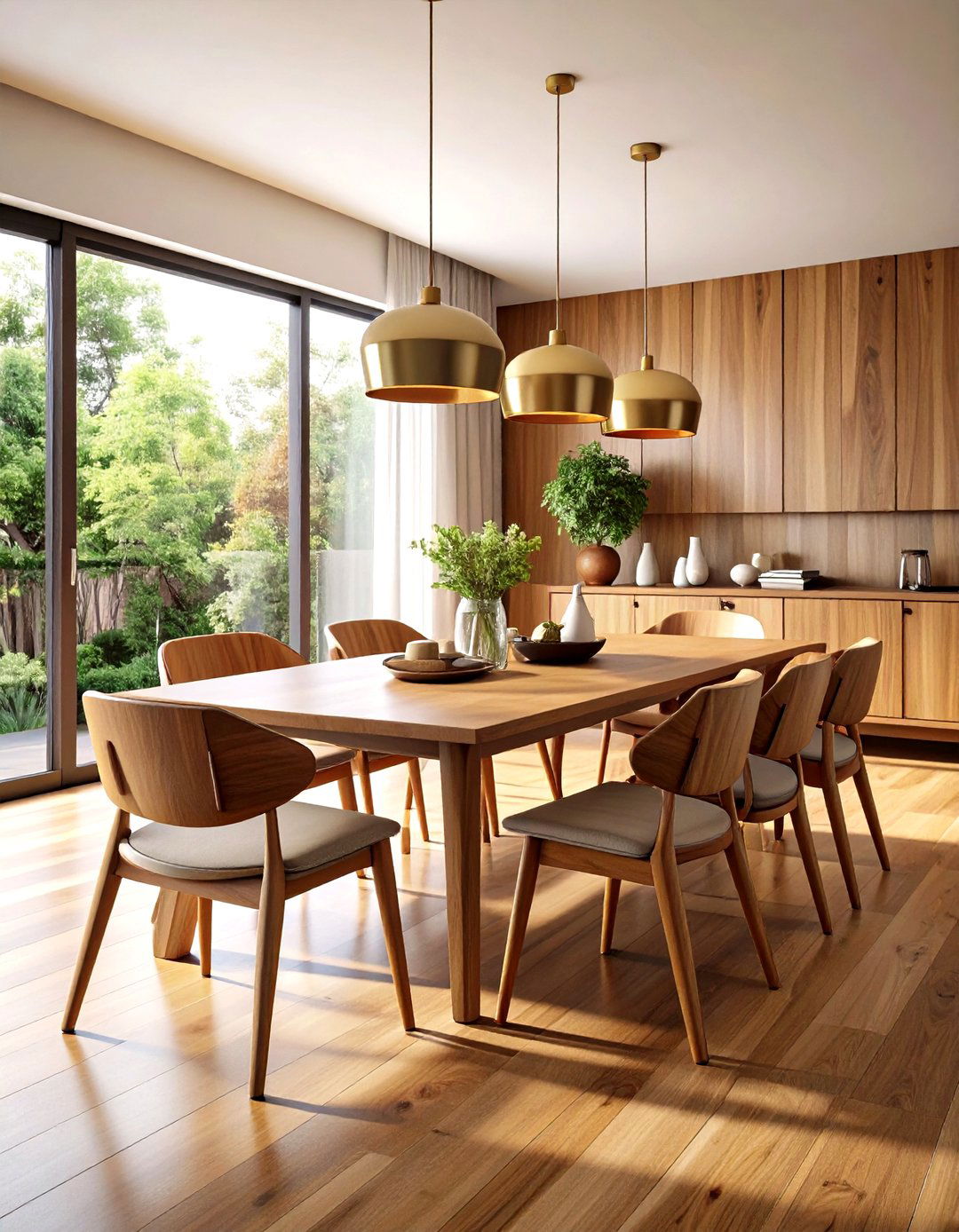
This warm mid-century modern dining room celebrates the period's love for natural materials through an emphasis on beautiful wood grains and finishes. Different wood species—perhaps walnut, teak, and oak—are carefully combined to create visual interest while maintaining harmony. The dining table features dramatic wood grain patterns, while chairs and credenzas showcase complementary wood tones and textures. Wood paneling or built-in elements extend the natural theme throughout the space. The color palette remains neutral to allow the wood's natural beauty to shine, with perhaps cream or soft gray walls providing a subtle backdrop. Lighting fixtures in brass or natural materials complement the wood tones without competing for attention. This approach demonstrates how mid-century modern design can celebrate natural materials while maintaining the style's essential sophistication and functionality.
14. Brass and Metal Accents Mid-Century Modern Dining Room
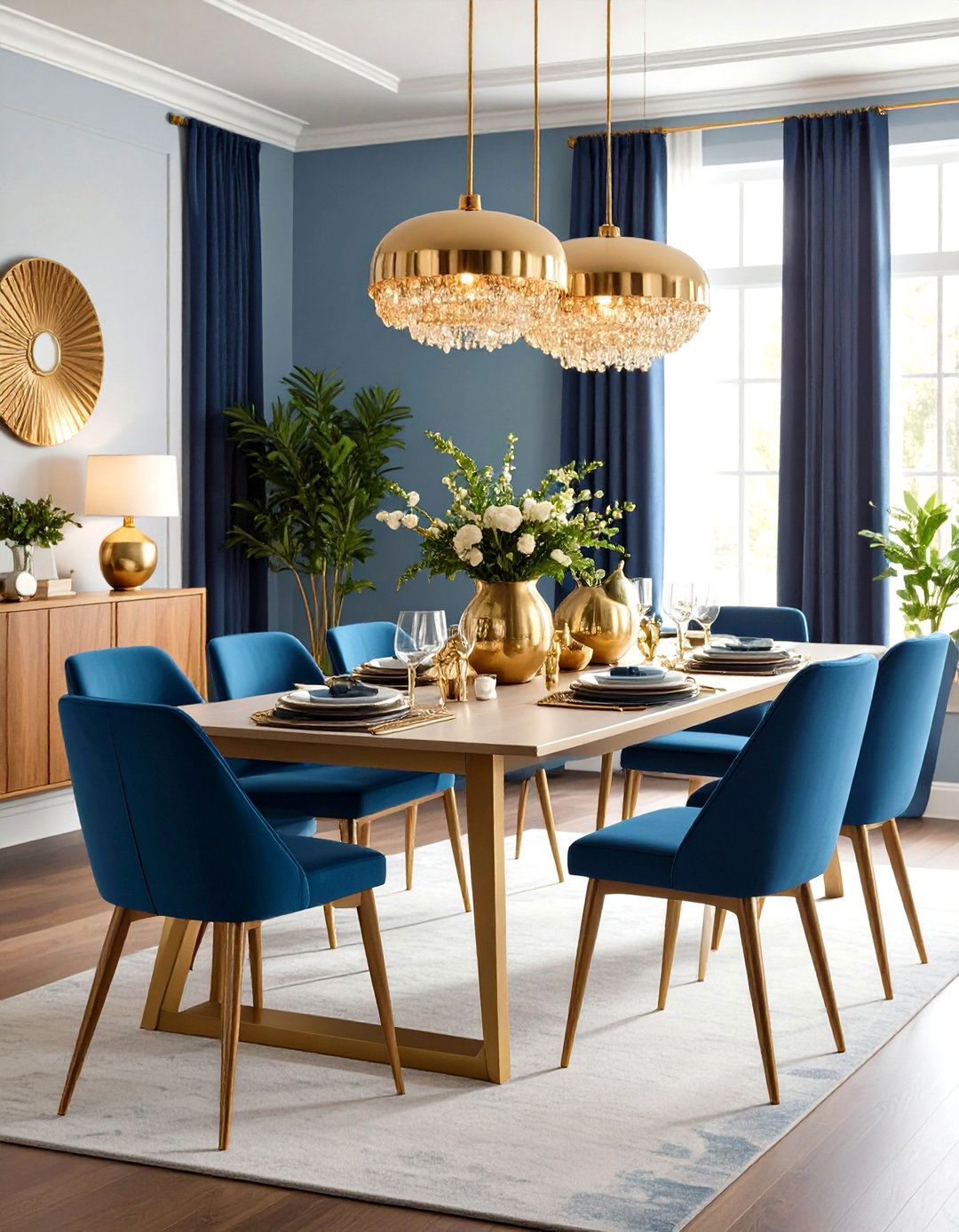
This elegant mid-century modern dining room showcases the period's love for metallic finishes through carefully coordinated brass and metal elements. A dining table with brass legs or metal accents becomes the room's centerpiece, while chair hardware and lighting fixtures continue the metallic theme. The warm glow of brass creates a sophisticated atmosphere, while other metal finishes add visual interest and depth. The color palette typically includes warm neutrals that complement the metallic finishes, with perhaps deep blues or greens providing contrast. Metallic accessories like serving pieces or decorative objects reinforce the theme without overwhelming the space. The overall effect is both luxurious and understated, demonstrating how mid-century modern design can incorporate glamorous elements while maintaining the style's essential balance and functionality.
15. Curved Furniture Focus Mid-Century Modern Dining Room
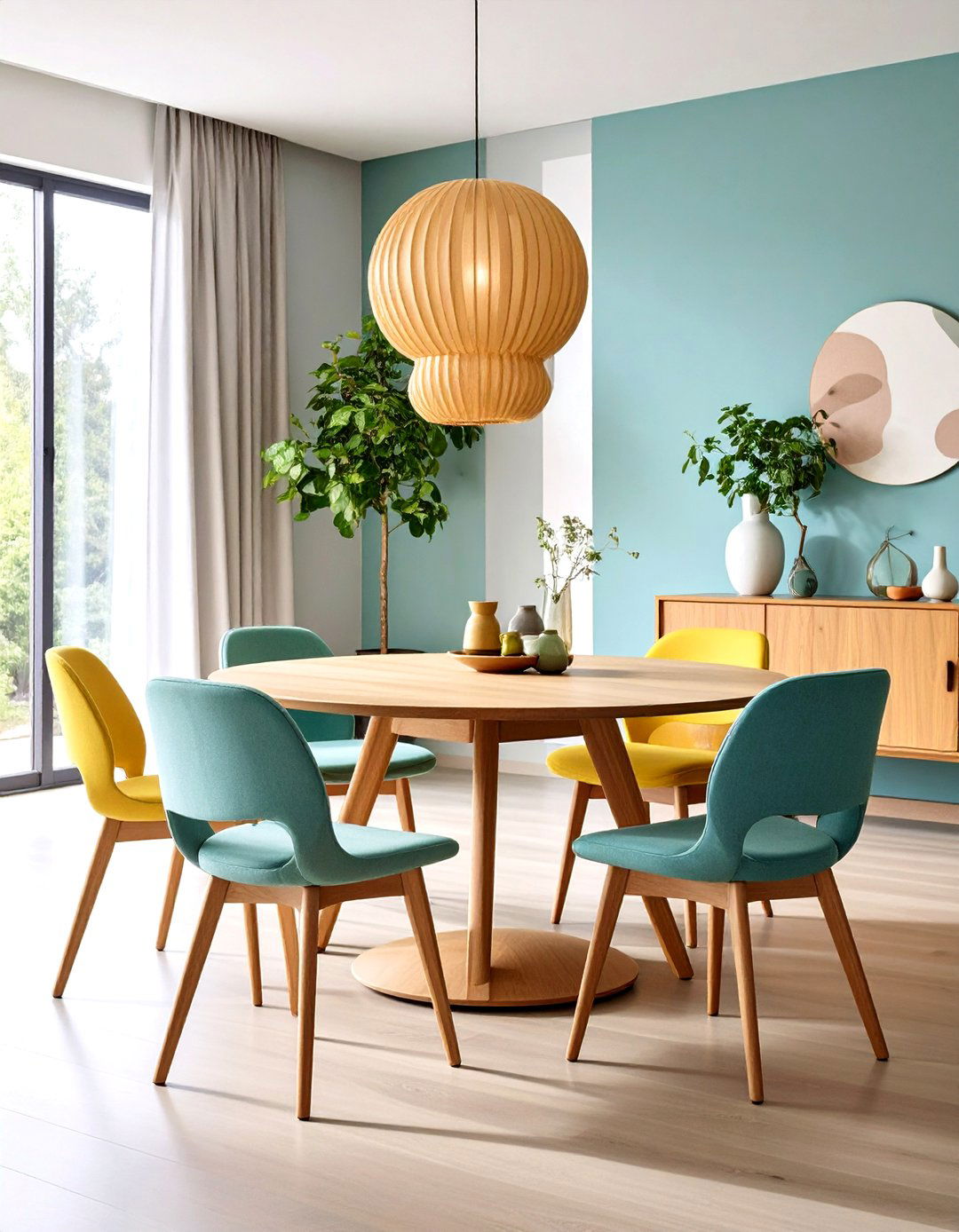
This flowing mid-century modern dining room emphasizes the period's fascination with organic, curved forms through furniture selection and spatial arrangement. A round dining table with a sculptural pedestal base anchors the space, surrounded by chairs with curved backs and flowing lines. The famous Eames molded plywood chairs or similar curved designs exemplify this approach, combining comfort with artistic expression. Built-in banquettes or curved storage elements continue the theme while providing functional solutions. The color palette remains warm and natural, allowing the furniture's sculptural qualities to take center stage. Lighting fixtures with globe or organic shapes complement the room's curvilinear theme. This design philosophy reflects the mid-century modern belief that furniture should be both beautiful and comfortable, creating spaces that feel both sophisticated and naturally welcoming.
16. Gallery Wall Art Mid-Century Modern Dining Room

This sophisticated mid-century modern dining room transforms into a gallery space through carefully curated artwork and thoughtful display techniques. A coordinated collection of period-appropriate prints, photographs, or original artworks creates visual interest while maintaining the room's clean aesthetic. The dining furniture remains simple and understated, allowing the artwork to take center stage. Abstract compositions, geometric prints, and nature-inspired pieces reflect the period's artistic sensibilities. The color palette coordinates with the artwork while maintaining the room's overall balance. Lighting is carefully positioned to illuminate both the dining area and the artwork effectively. This approach demonstrates how mid-century modern design can incorporate personal collections and artistic expression while maintaining the style's essential sophistication and functionality.
17. Statement Credenza Mid-Century Modern Dining Room
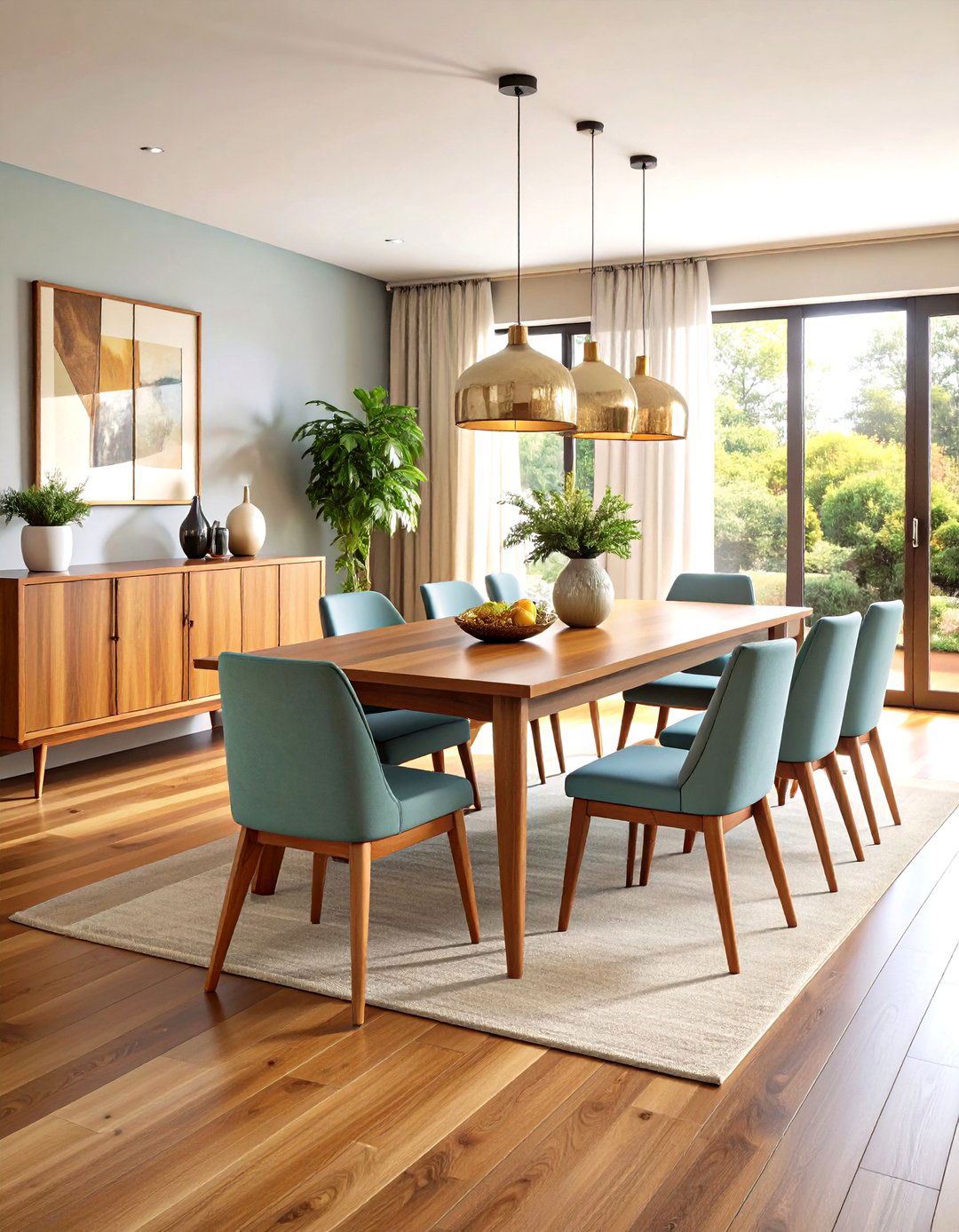
This refined mid-century modern dining room features a spectacular credenza or sideboard as its defining element, showcasing the period's emphasis on beautiful, functional furniture. The credenza displays characteristic mid-century features like tapered legs, sliding doors, and rich wood finishes, while providing essential storage for dining accessories. The dining table and chairs complement rather than compete with the credenza's dramatic presence. The color palette typically remains neutral to allow the credenza's design and materials to shine. Lighting fixtures illuminate both the dining area and the credenza, creating a sophisticated interplay of light and shadow. Carefully selected accessories on and around the credenza add personality while maintaining the room's clean aesthetic. This approach demonstrates how a single, well-designed piece can define an entire room's character while providing essential functionality.
18. Pendant Cluster Lighting Mid-Century Modern Dining Room
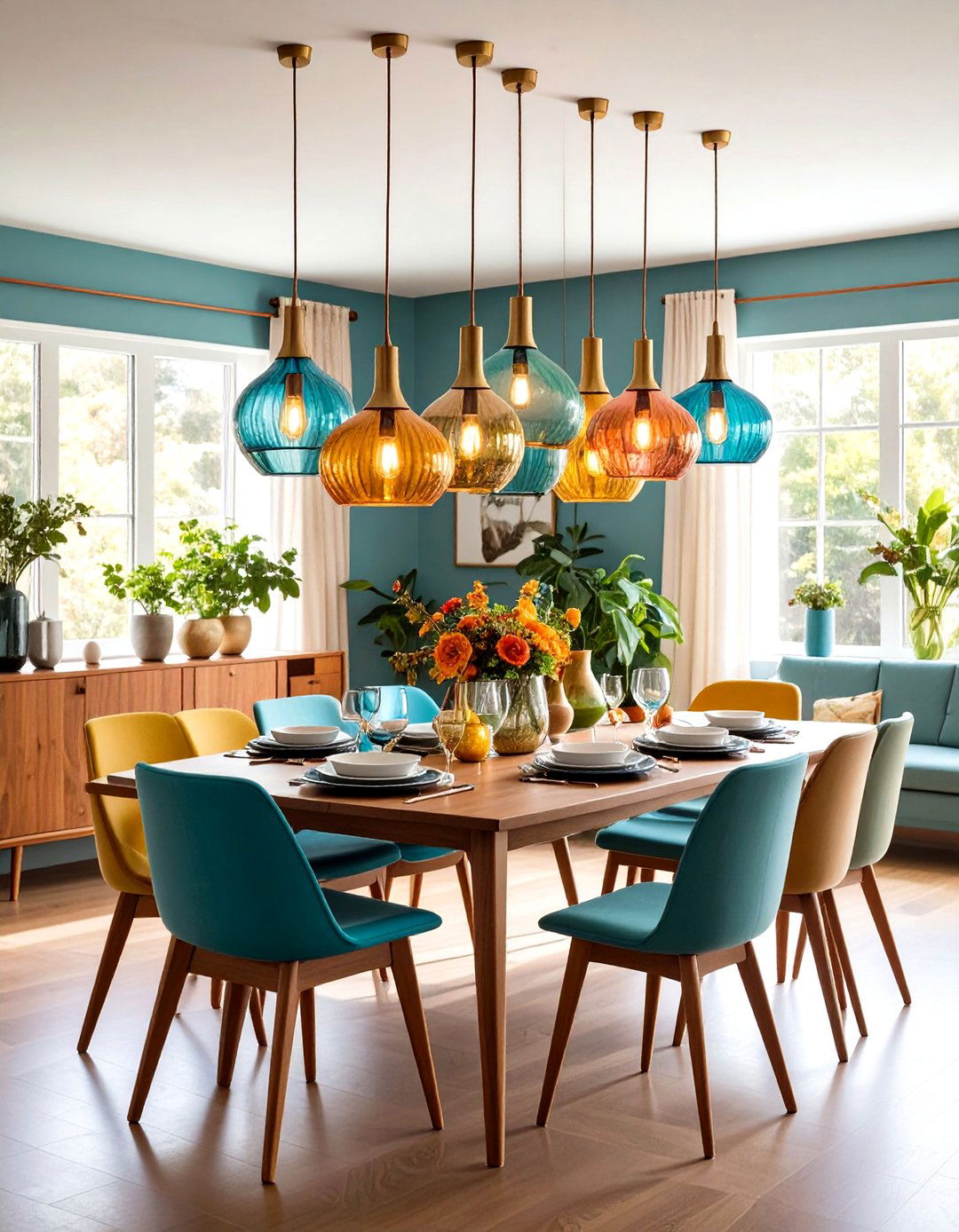
This innovative mid-century modern dining room features multiple pendant lights arranged in an artistic cluster, creating dramatic illumination and visual interest. The pendant lights, typically featuring brass, copper, or colored glass shades, are suspended at varying heights to create depth and movement. The dining furniture remains simple and understated, allowing the lighting installation to dominate the space. The color palette coordinates with the pendant lights while maintaining overall balance. This approach reflects the mid-century modern fascination with innovative lighting solutions and sculptural elements. The result is a dining room that feels both artistic and functional, demonstrating how creative lighting can transform a space while maintaining period authenticity.
19. Textured Fabric Elements Mid-Century Modern Dining Room
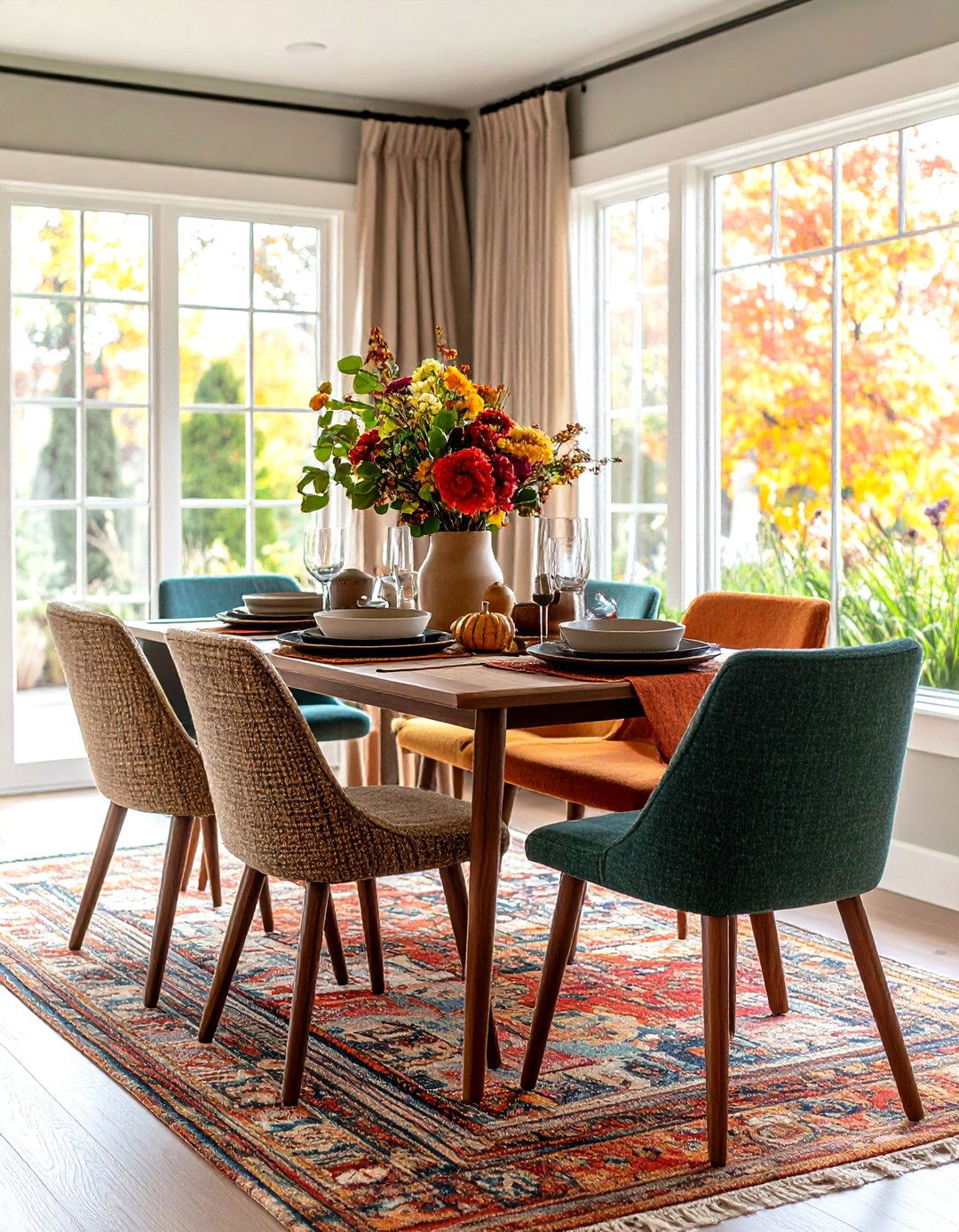
This inviting mid-century modern dining room incorporates rich textural elements through carefully selected fabrics and materials. Upholstered dining chairs feature period-appropriate fabrics like tweed, boucle, or textured linen in warm, earthy tones. Window treatments, area rugs, and cushions add layers of texture while maintaining the room's clean aesthetic. The color palette typically includes natural tones with perhaps one or two accent colors. The dining furniture features clean lines that provide a calm counterpoint to the textural richness. Lighting fixtures in natural materials or warm metals complement the fabric elements. This approach demonstrates how mid-century modern design can incorporate comfort and warmth while maintaining the style's essential sophistication and functionality.
20. Indoor-Outdoor Connection Mid-Century Modern Dining Room
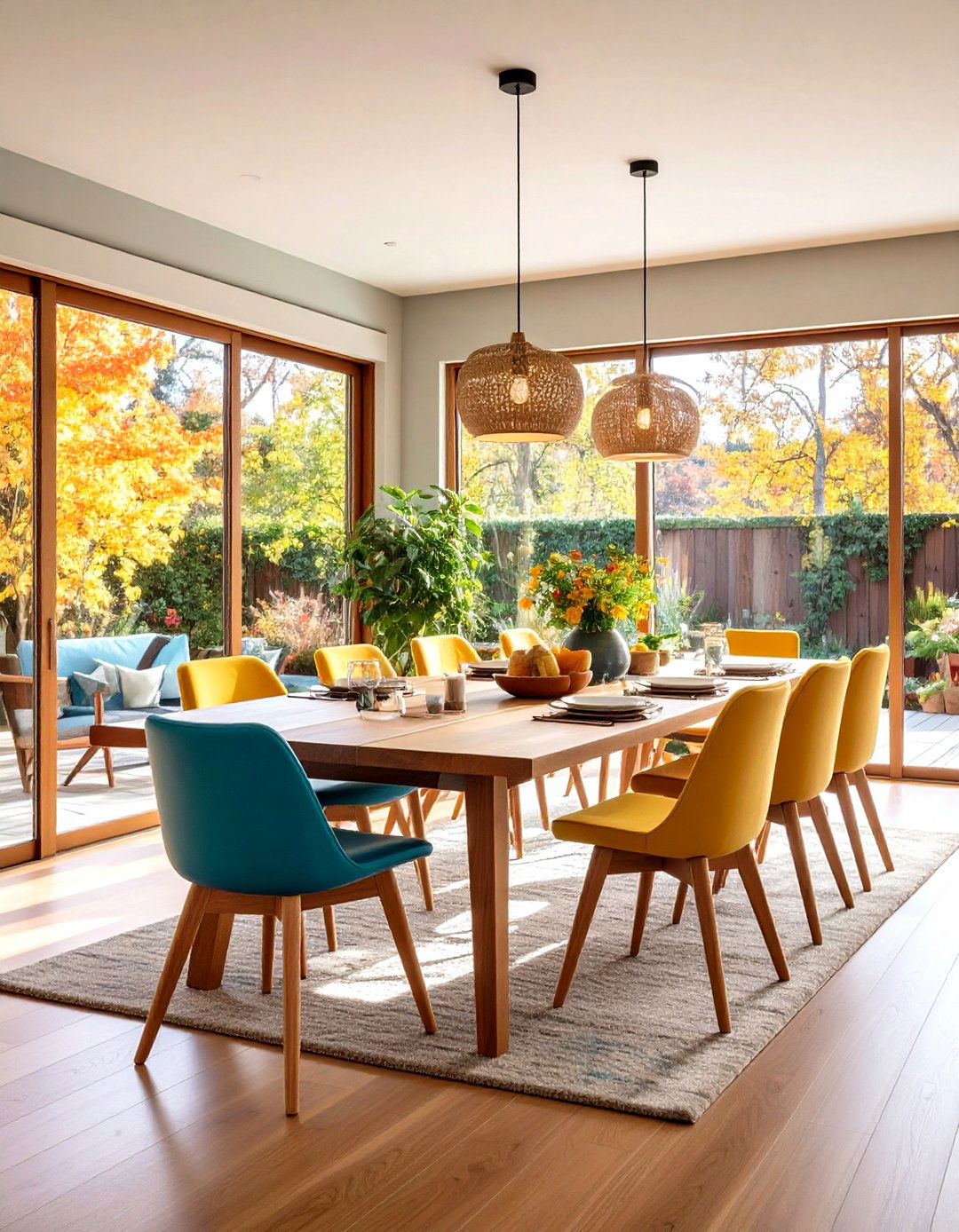
This seamless mid-century modern dining room creates a strong connection between interior and exterior spaces through large windows, sliding doors, and natural materials. The dining area opens onto a patio or garden, with furniture and color palettes that coordinate between indoor and outdoor spaces. Natural materials like wood and stone create continuity between inside and outside. The dining furniture is positioned to take advantage of views and natural light, while being suitable for both indoor and outdoor use. The color palette draws inspiration from the surrounding landscape, with earth tones and natural hues creating harmony. This approach reflects the mid-century modern emphasis on connecting with nature and creating spaces that feel both sophisticated and naturally comfortable.
Conclusion:
Mid-century modern dining rooms continue to captivate homeowners and designers with their perfect balance of sophistication and functionality. These twenty distinct approaches demonstrate the style's remarkable versatility, from bold color combinations to minimalist restraint, from statement lighting to natural material showcases. The enduring appeal of mid-century modern design lies in its celebration of both innovation and comfort, creating spaces that feel both historically significant and thoroughly contemporary. Whether you're drawn to the drama of a sputnik chandelier or the warmth of rich walnut furniture, these design concepts offer endless inspiration for creating dining rooms that are both beautiful and livable.


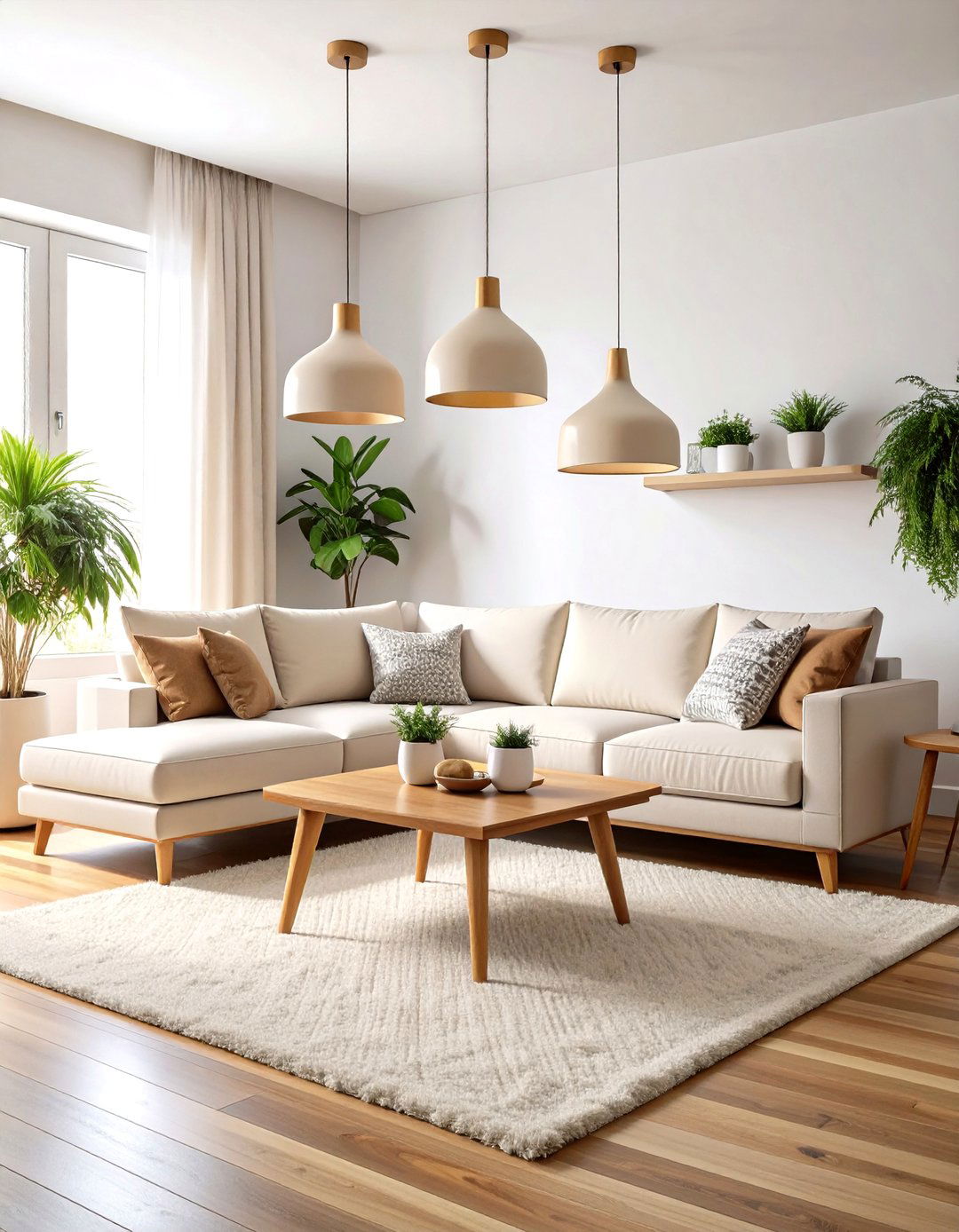
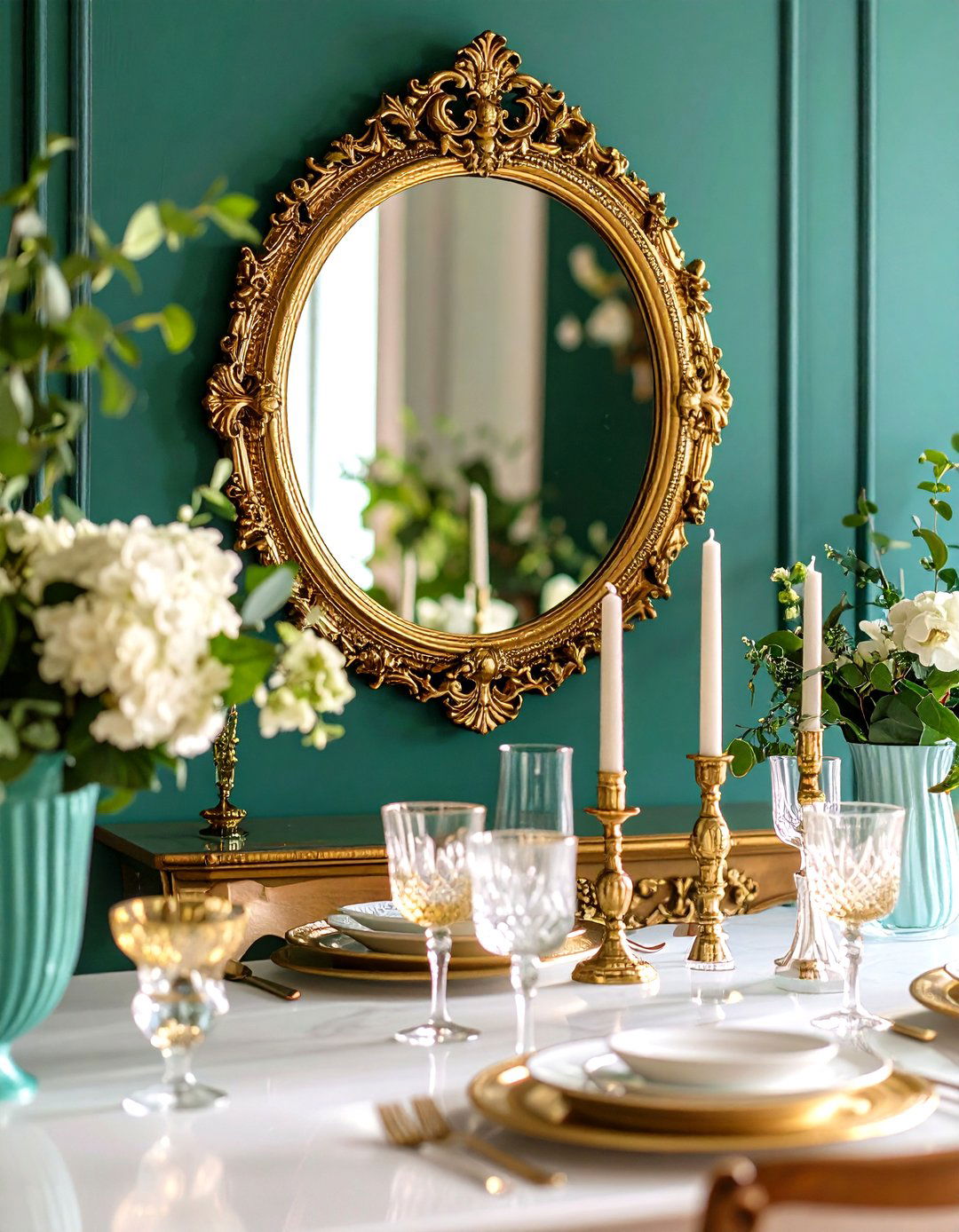
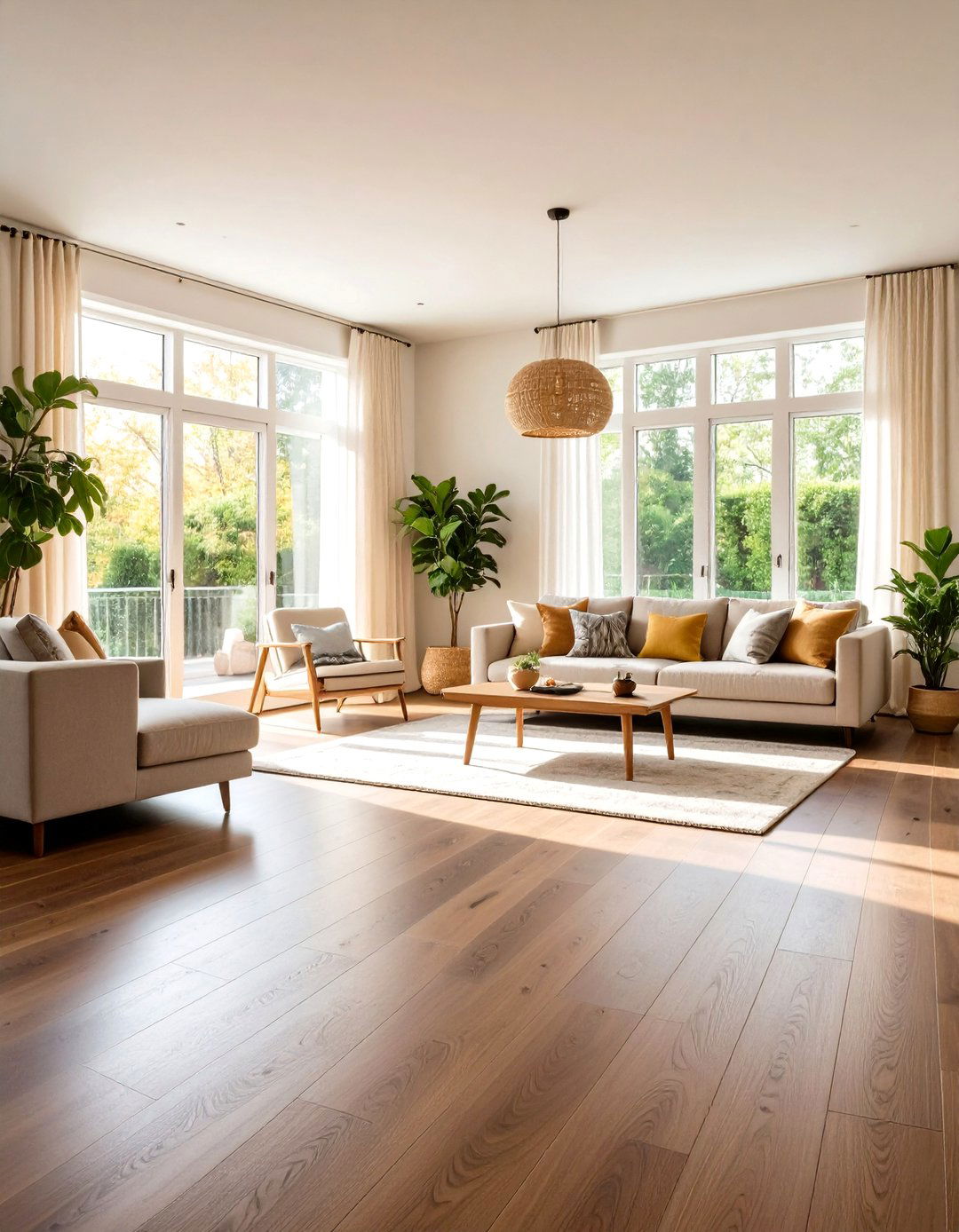
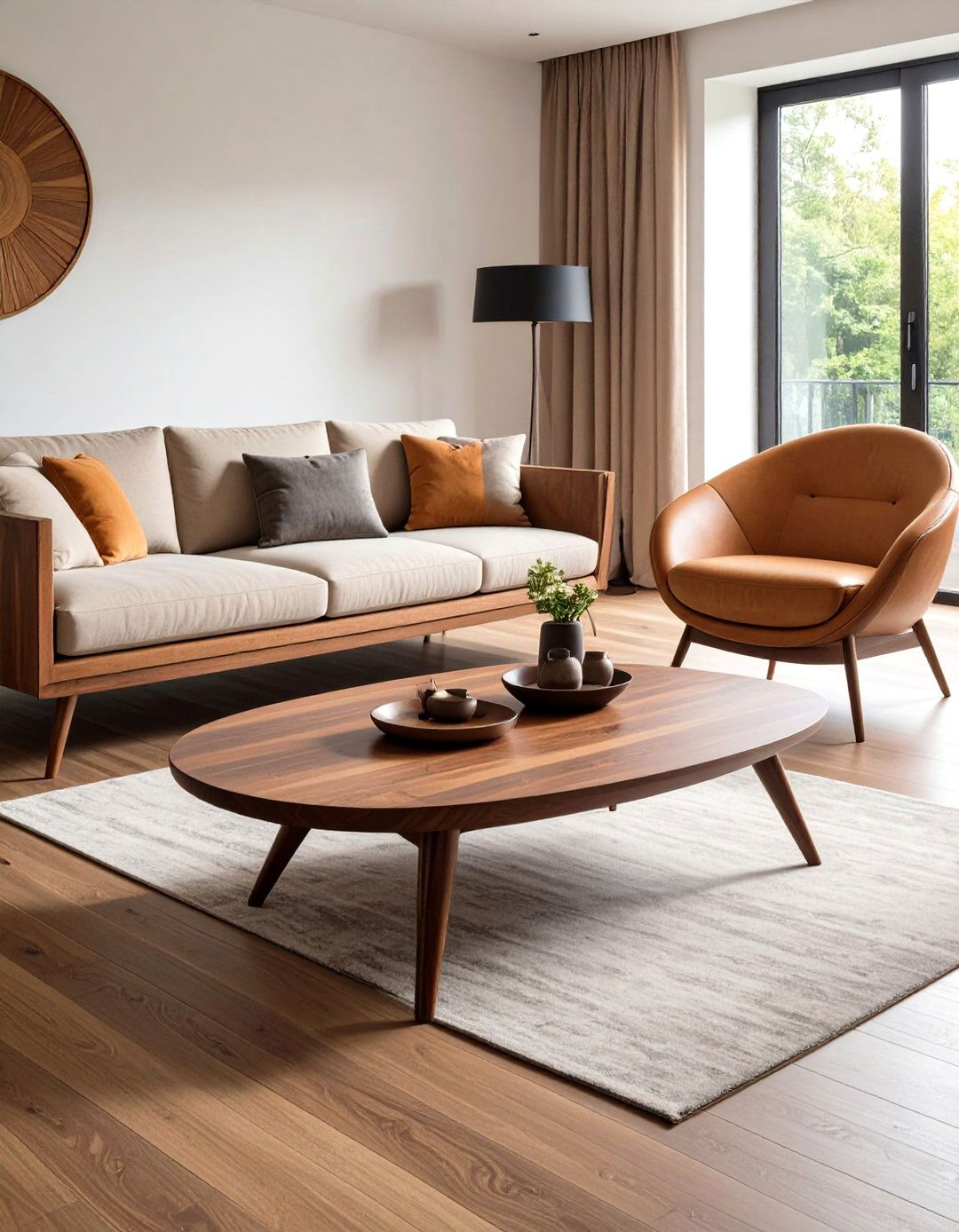
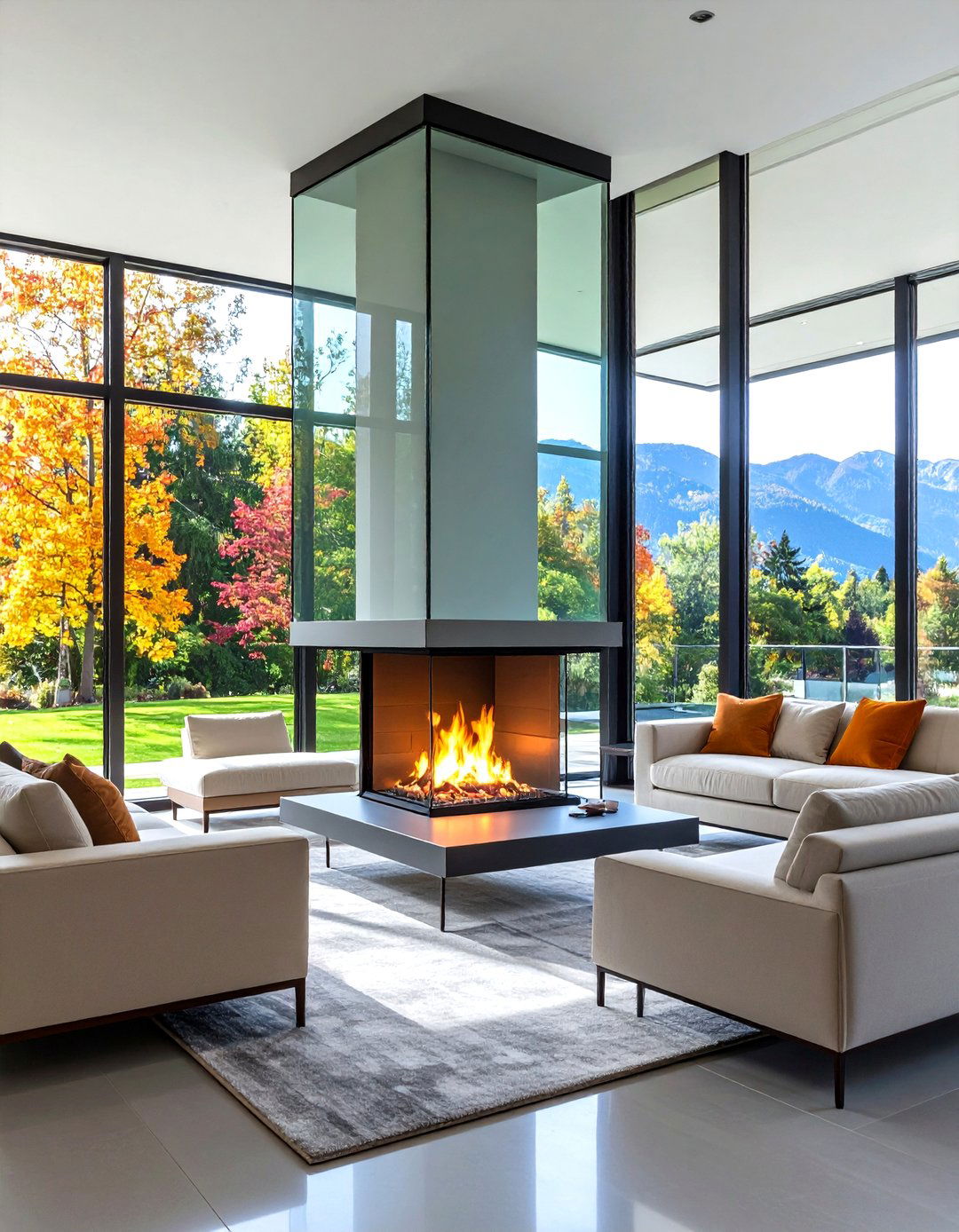
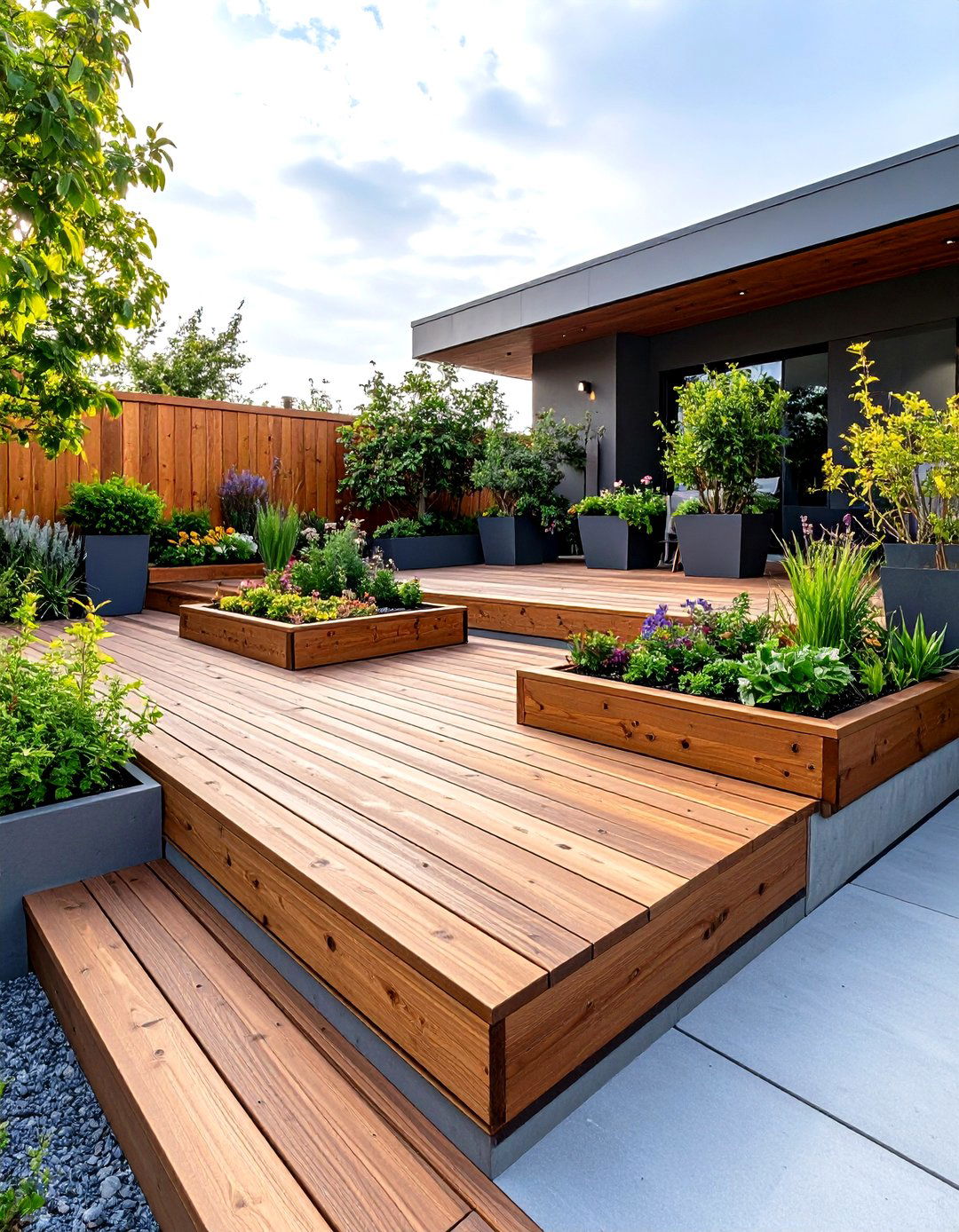
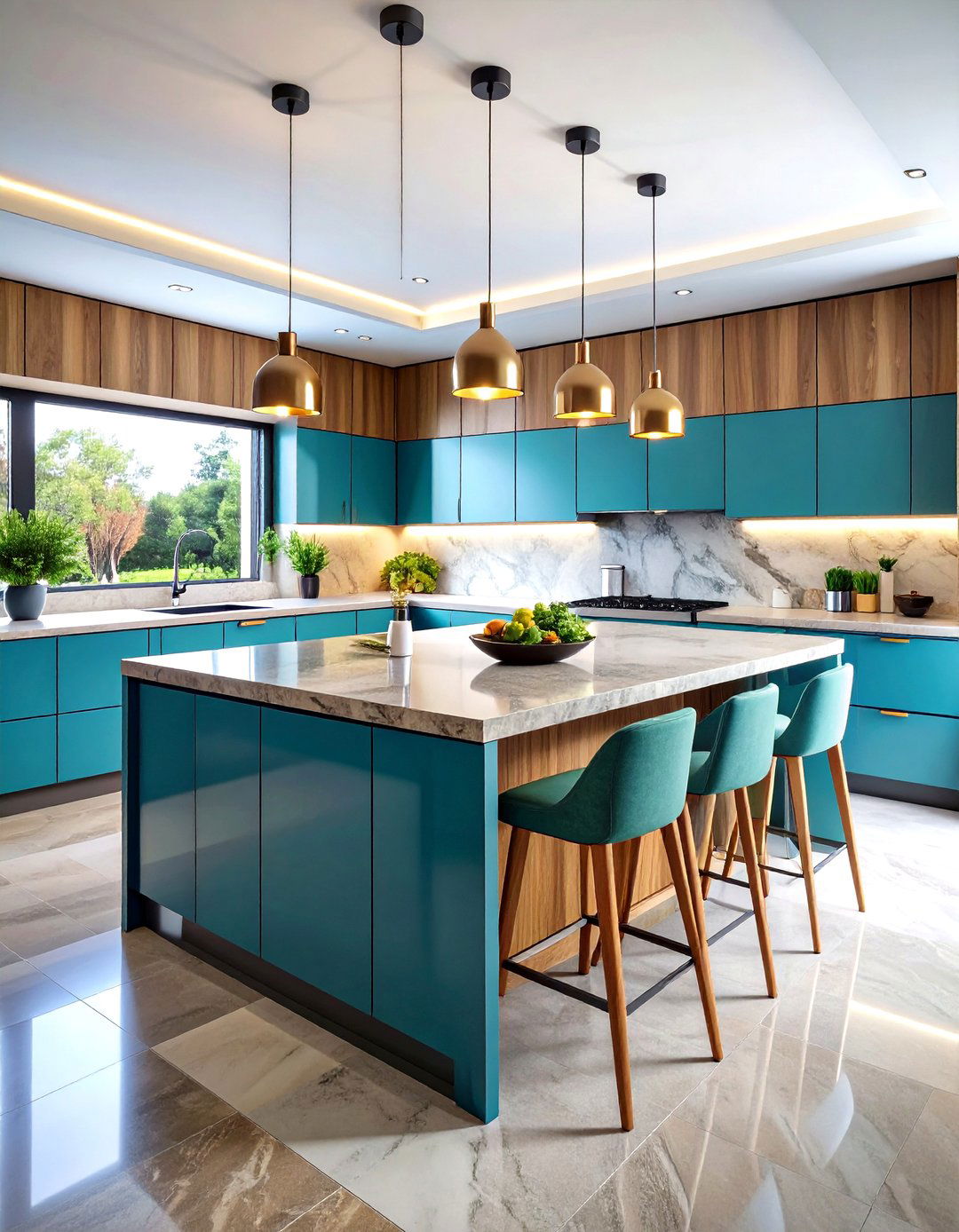
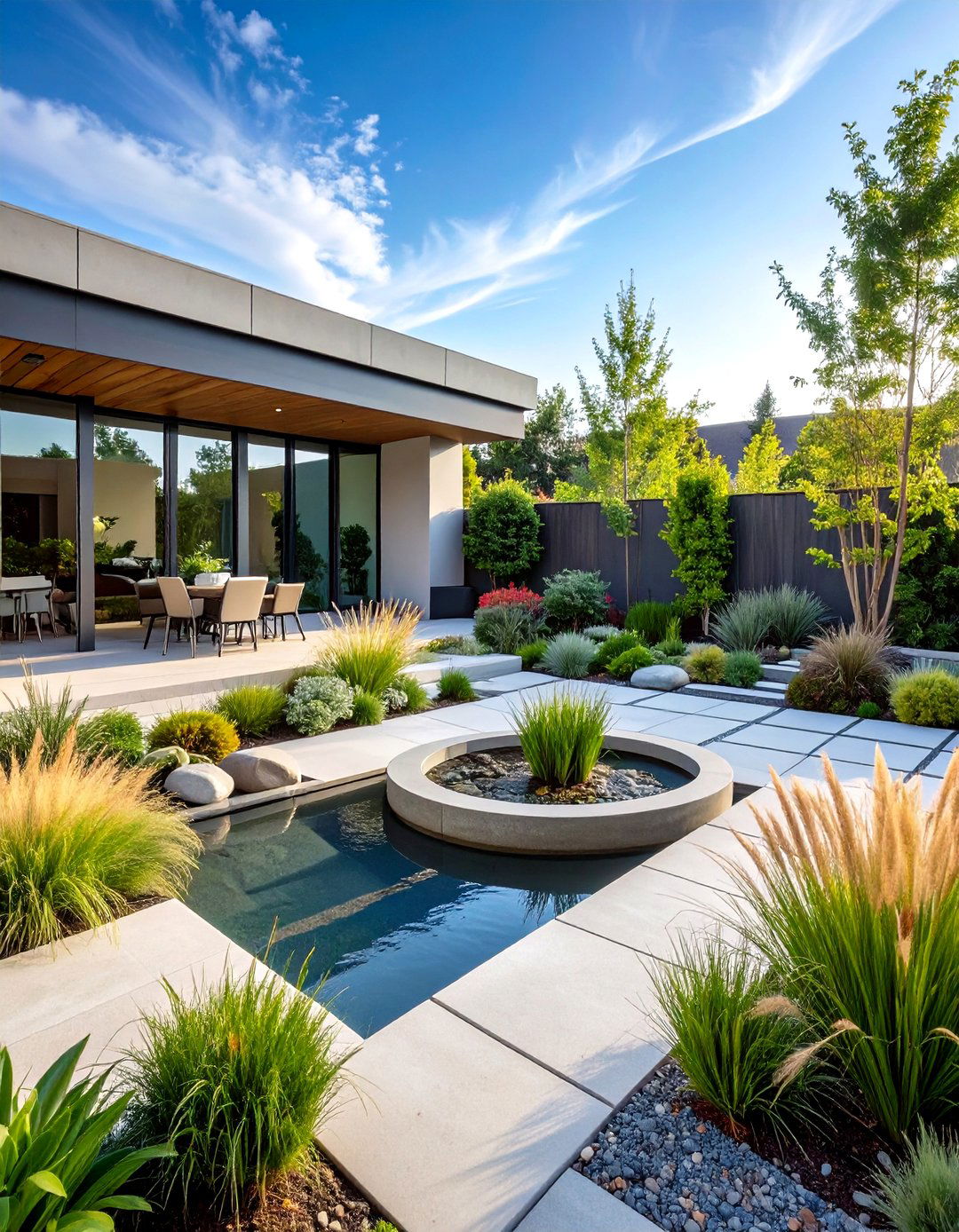
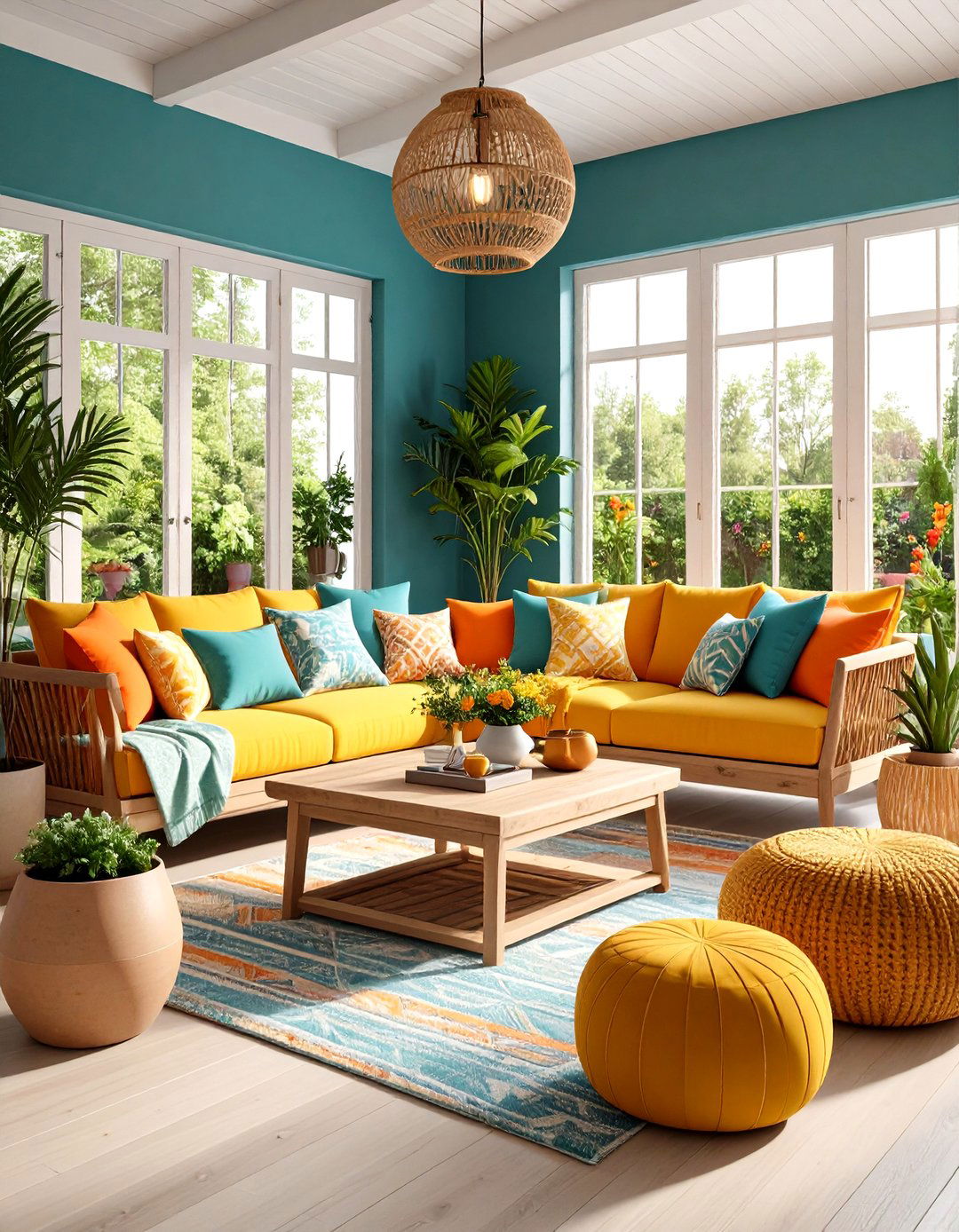
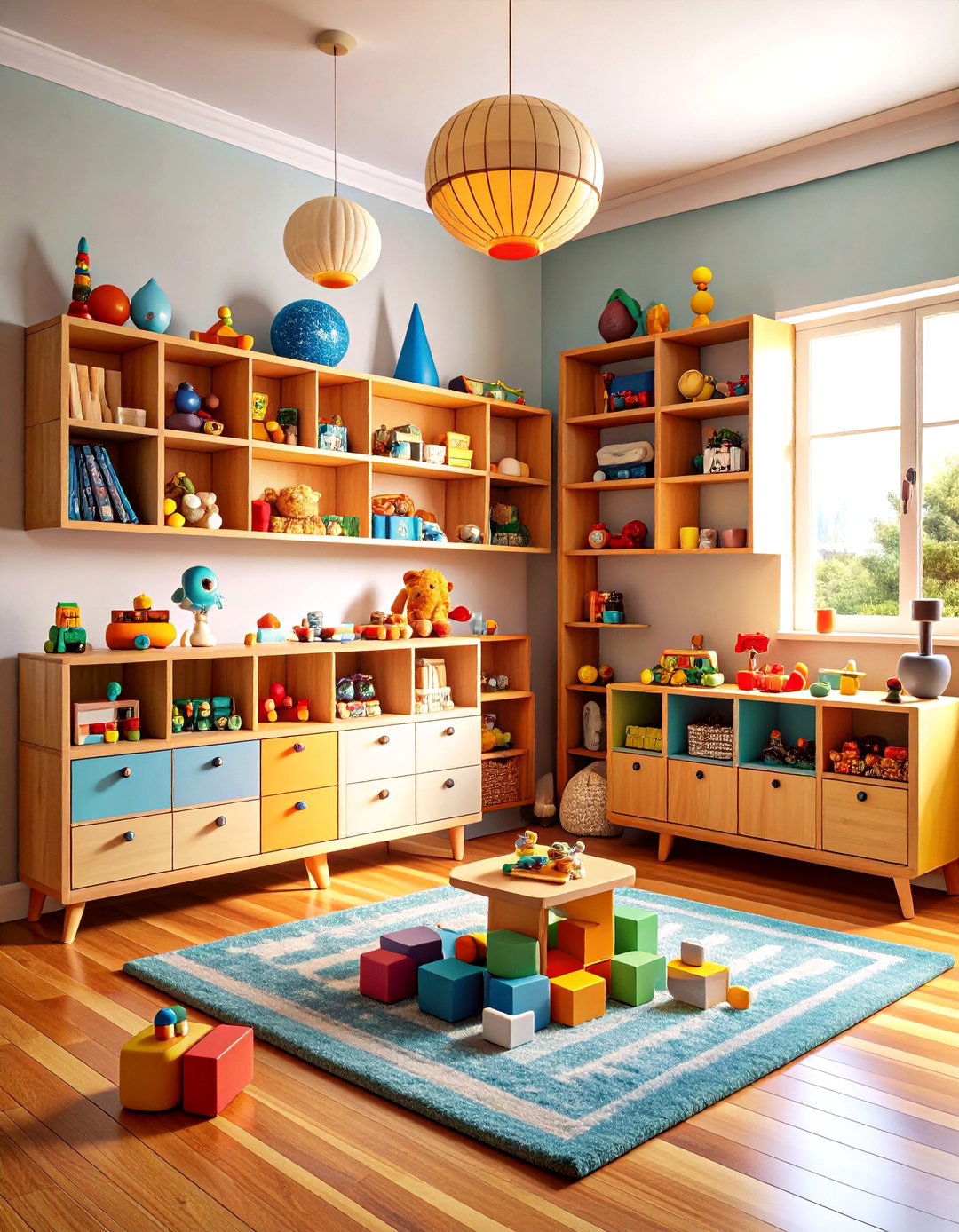
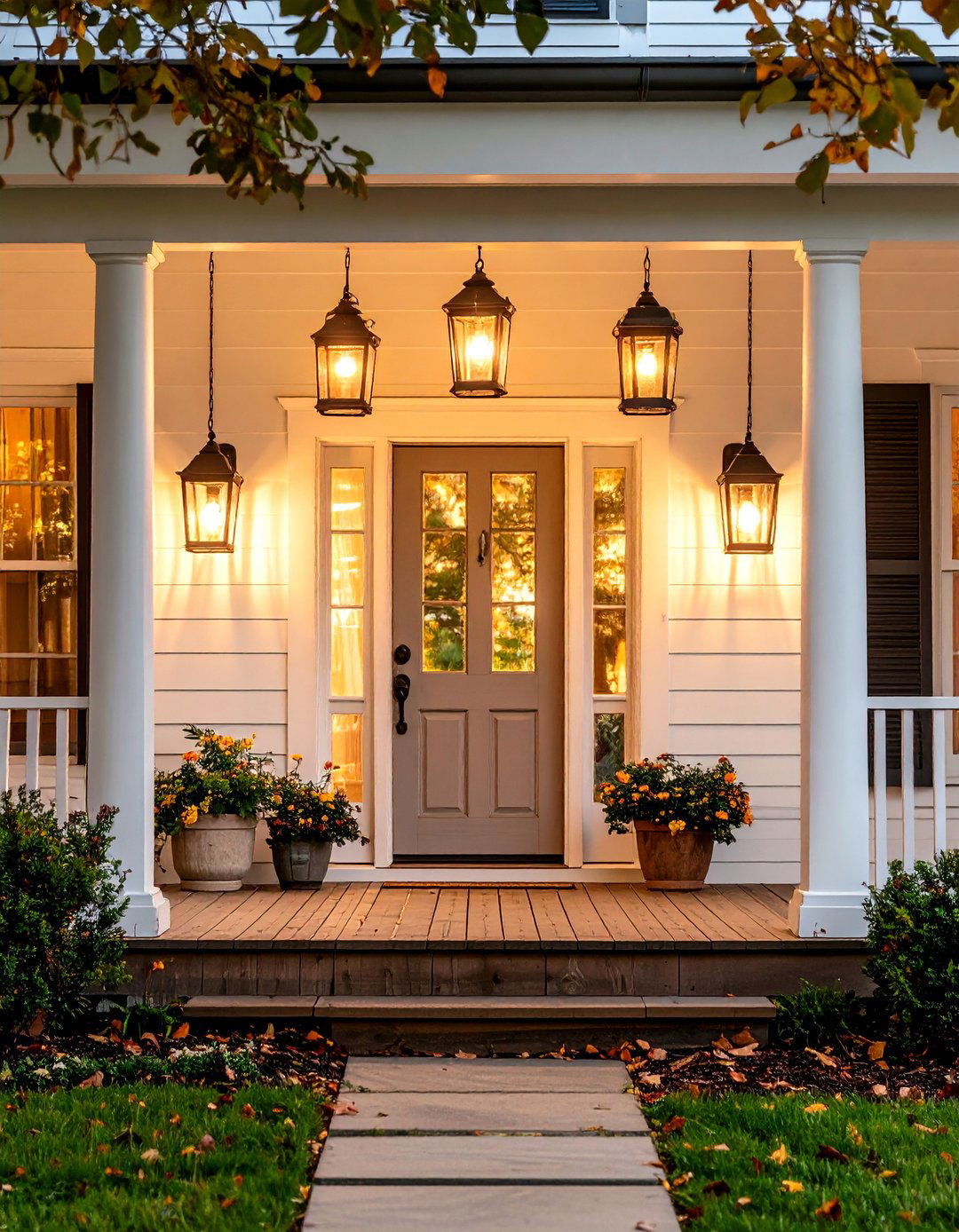
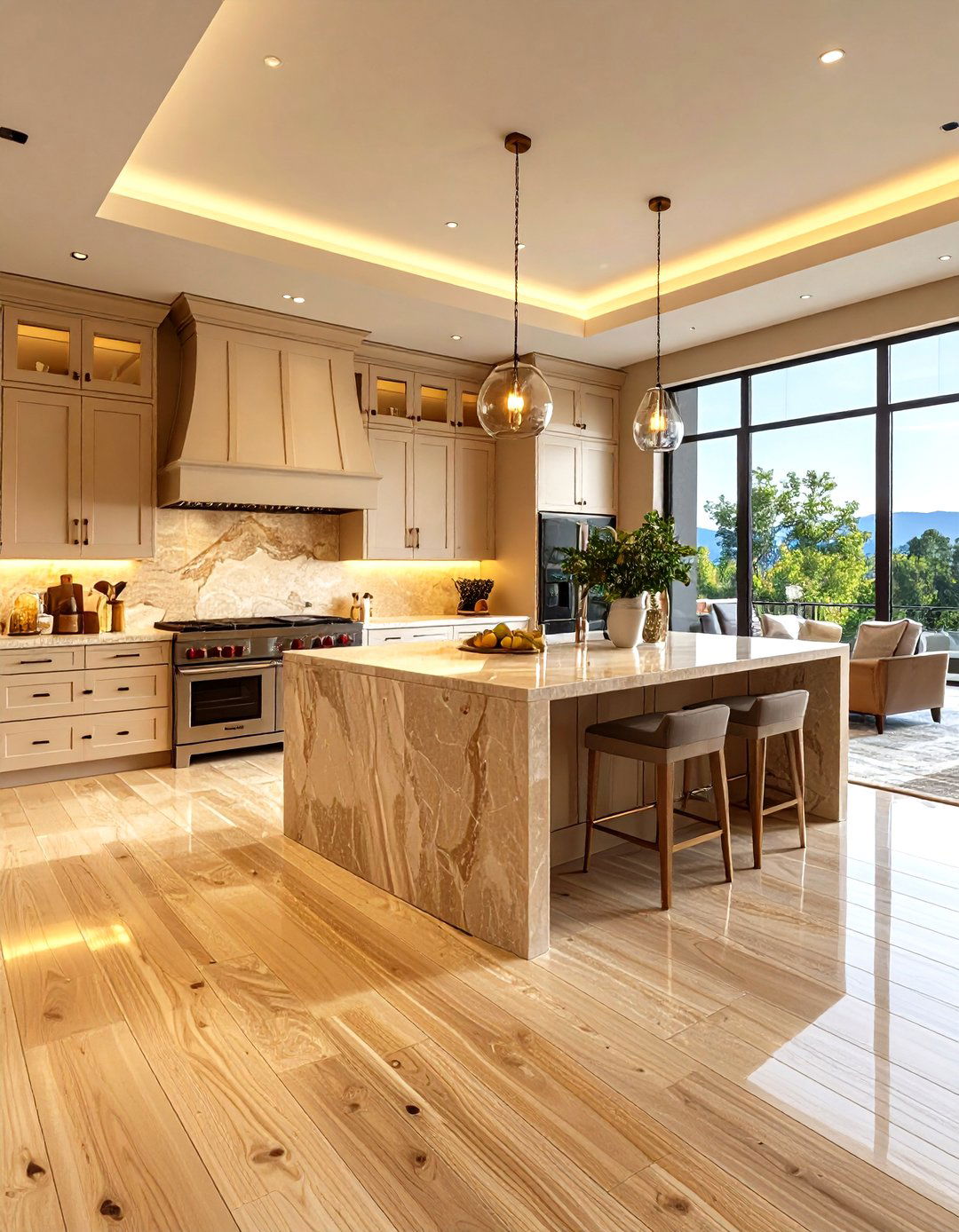

Leave a Reply